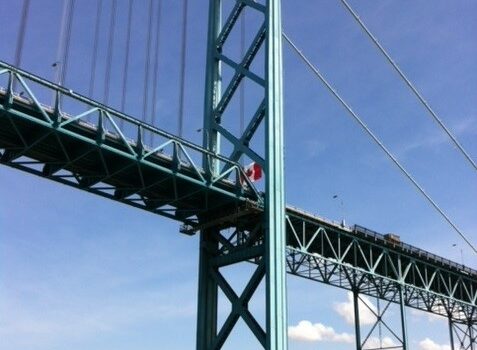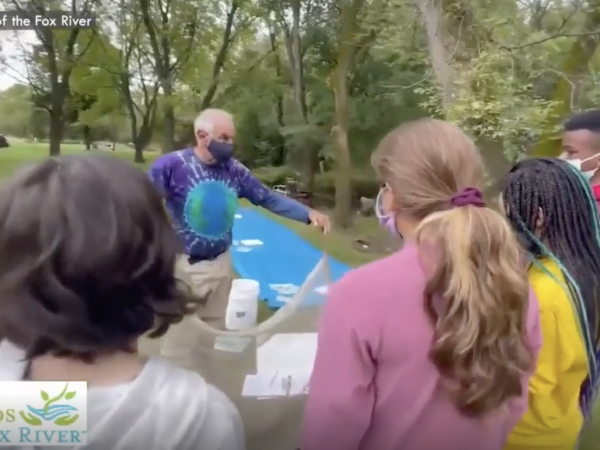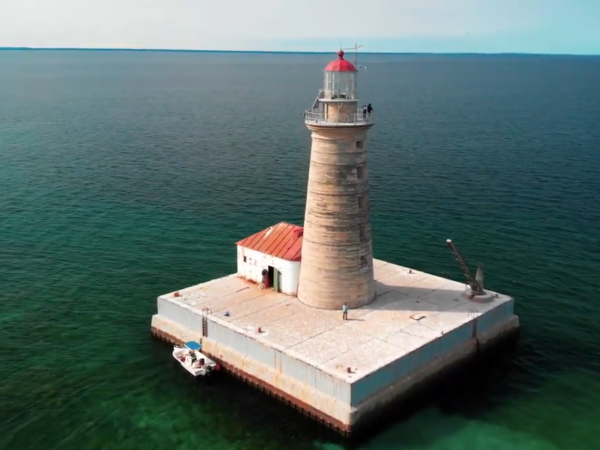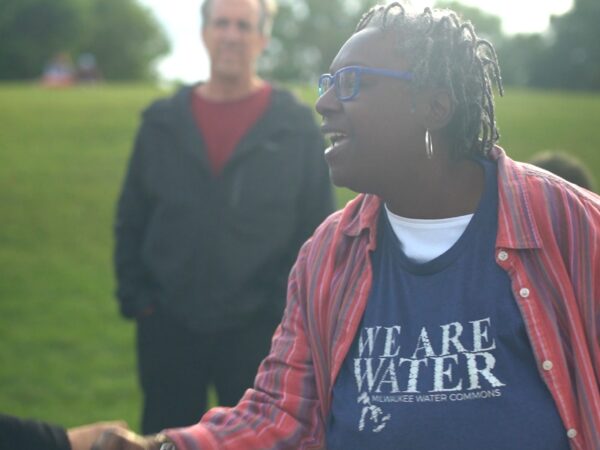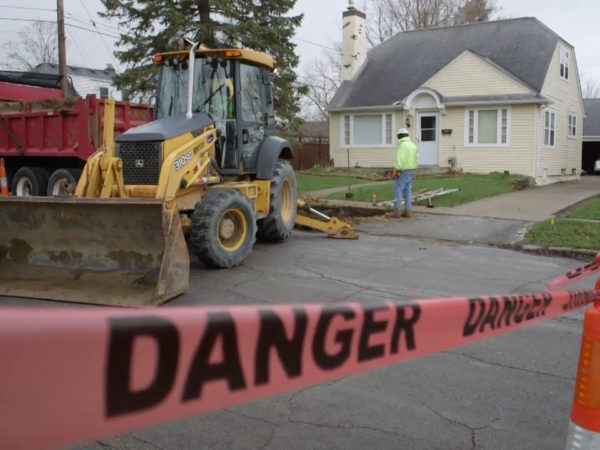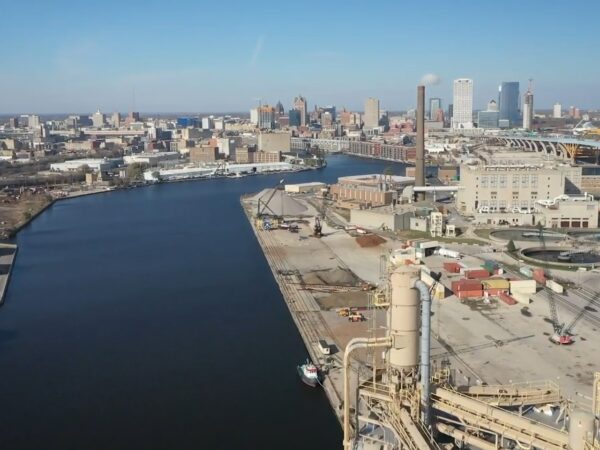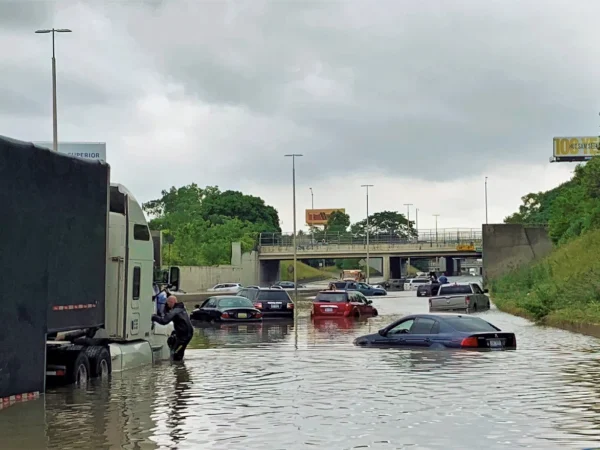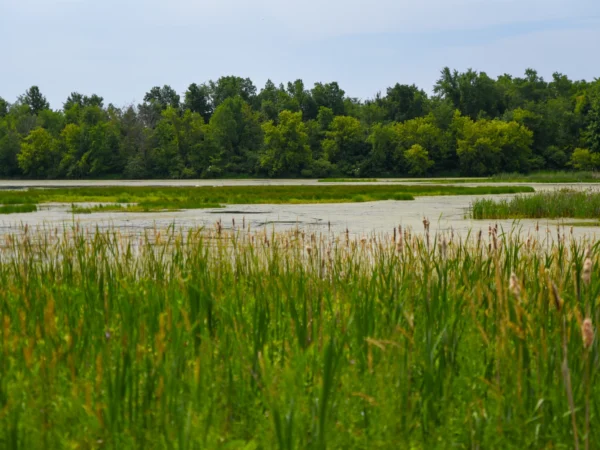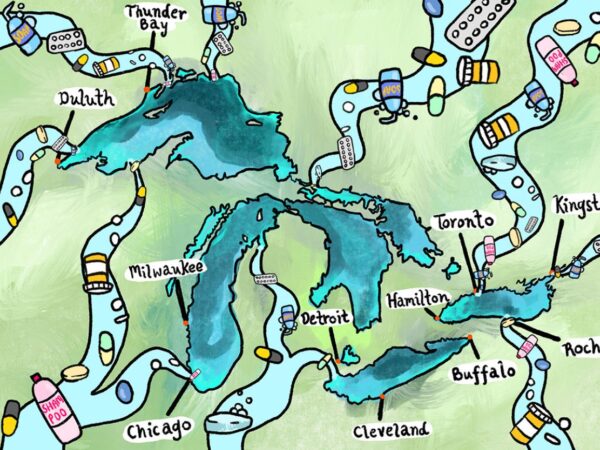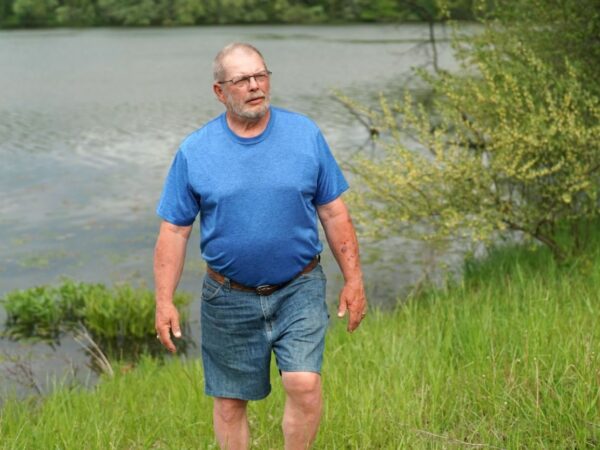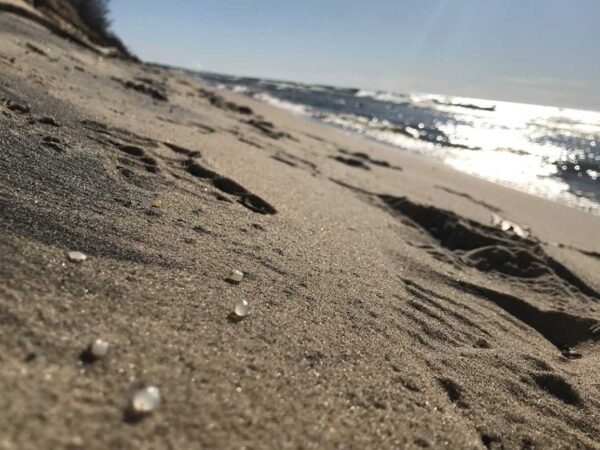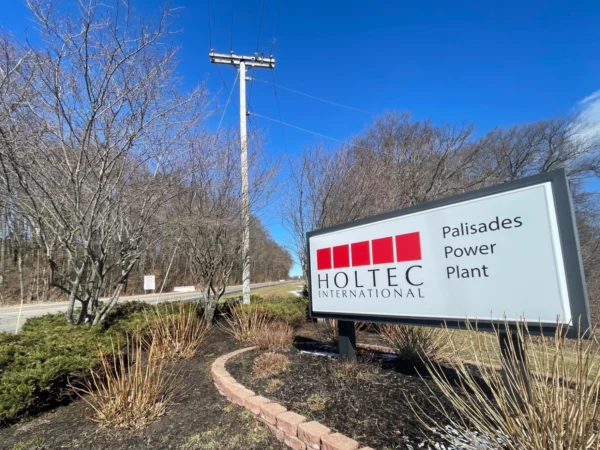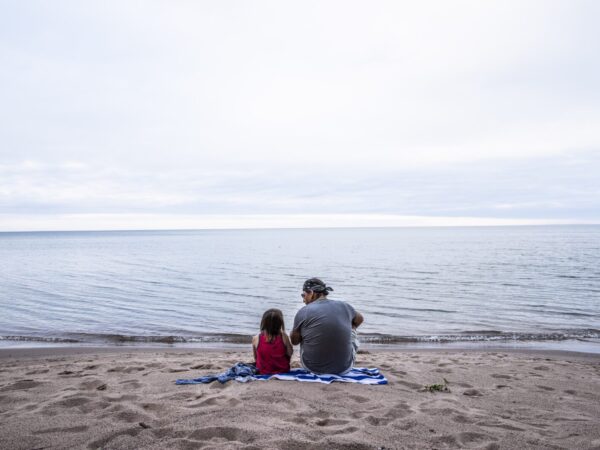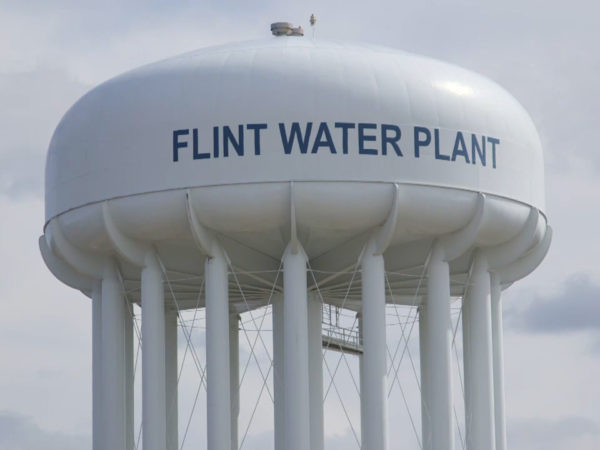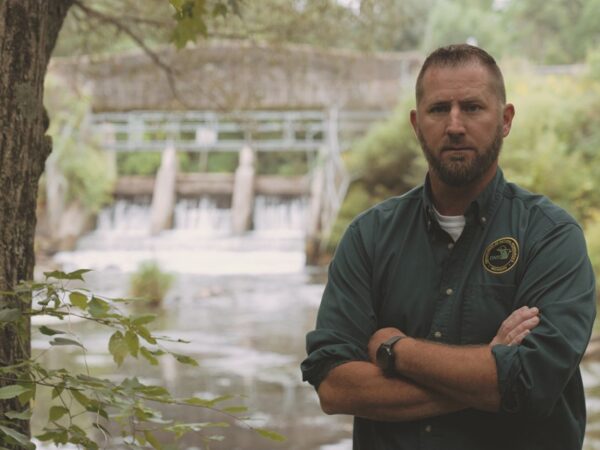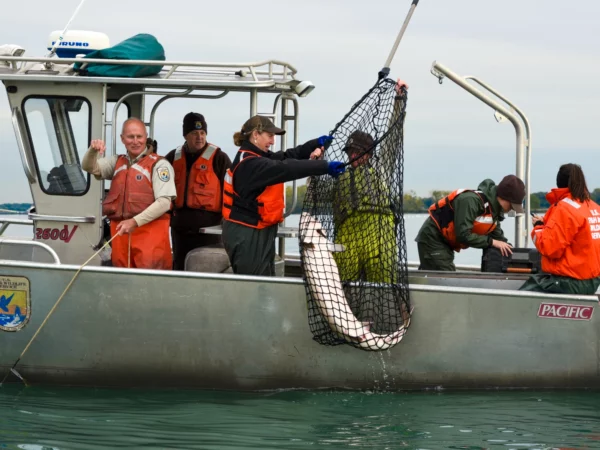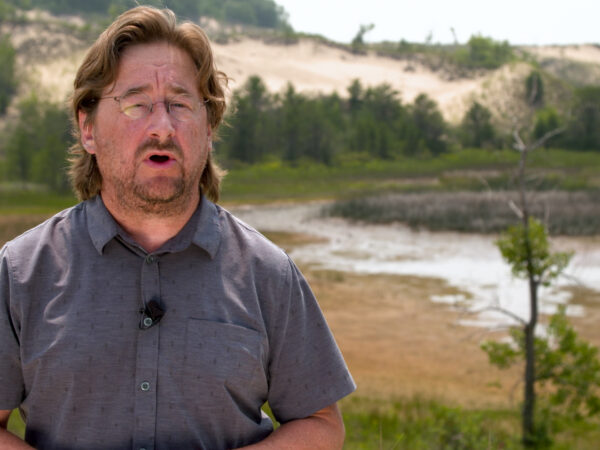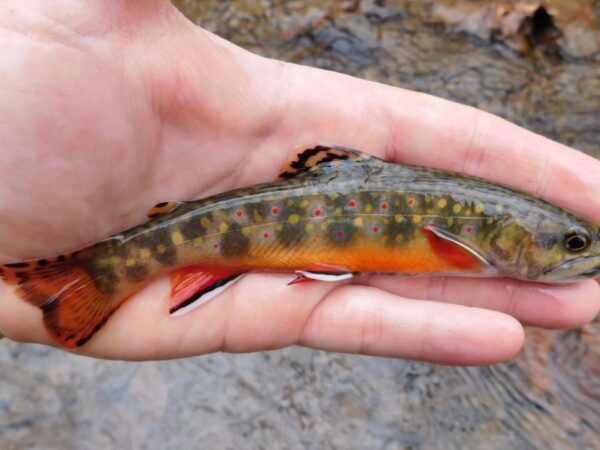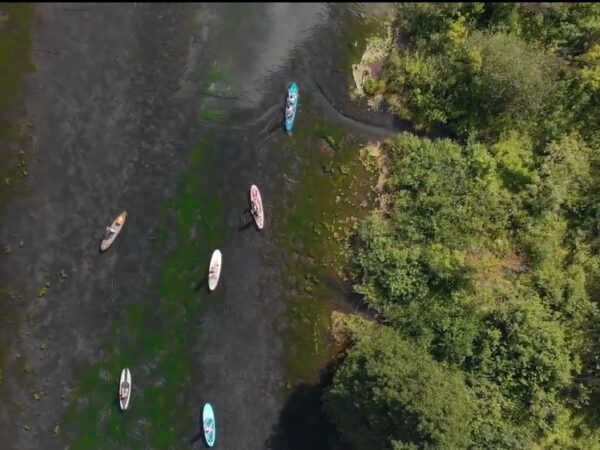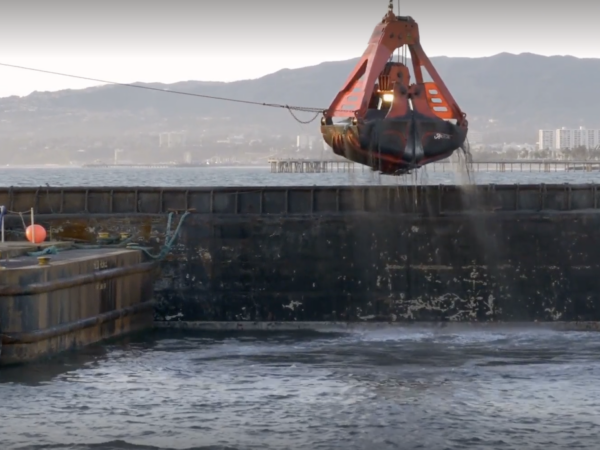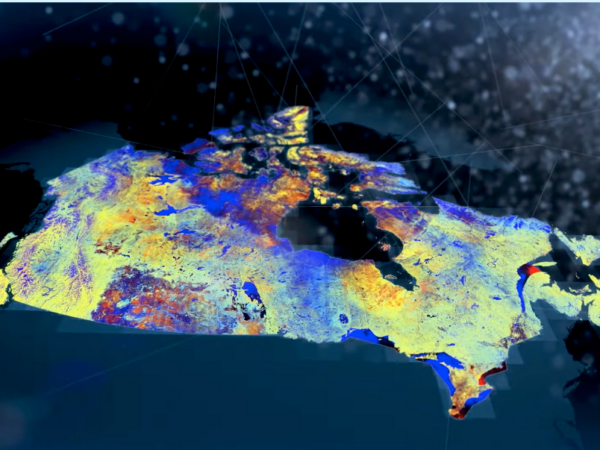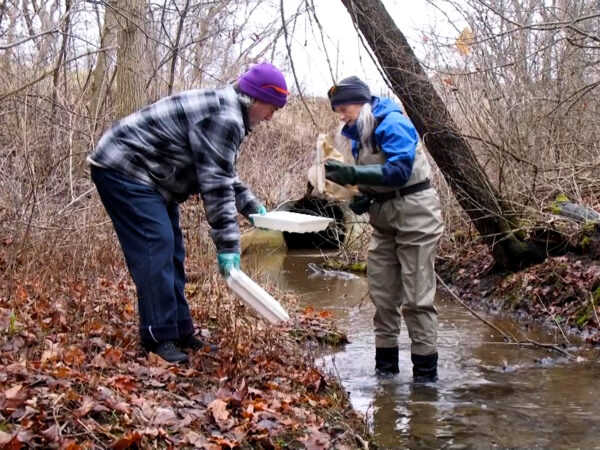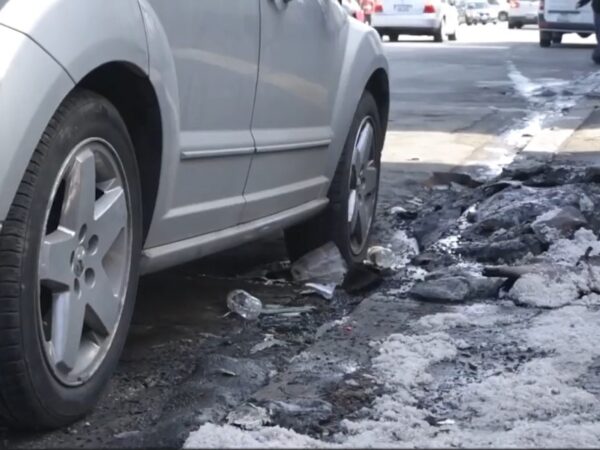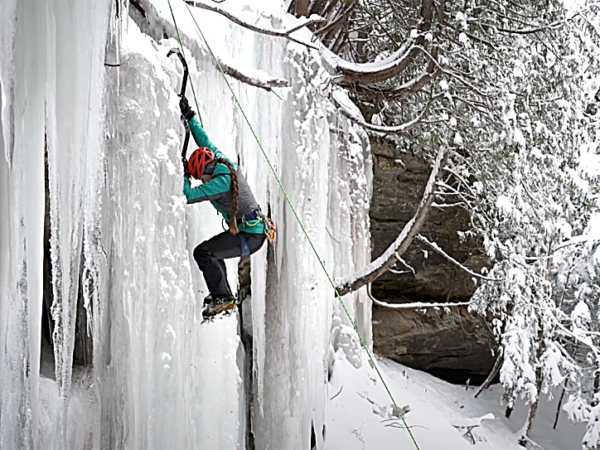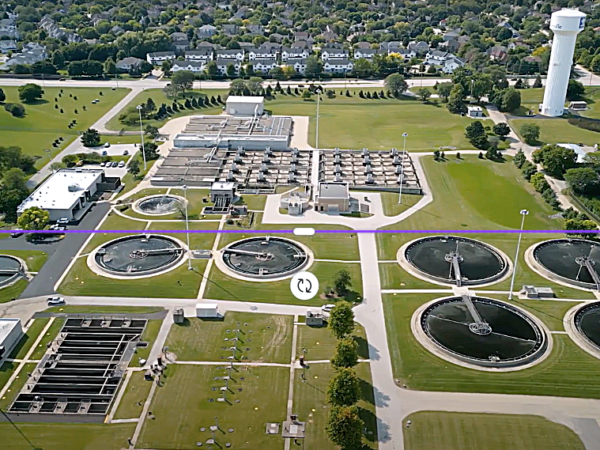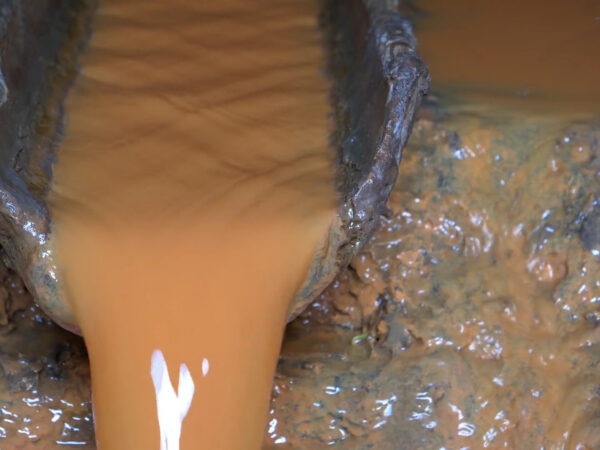
Great Lakes News Collaborative
The Great Lakes News Collaborative includes Bridge Michigan; Circle of Blue; Great Lakes Now at Detroit PBS; Michigan Public, Michigan’s NPR News Leader; and The Narwhal who work together to bring audiences news and information about the impact of climate change, pollution, and aging infrastructure on the Great Lakes and drinking water. This independent journalism is supported by the Charles Stewart Mott Foundation.
Projects from the Great Lakes News Collaborative
The Checkup
This series examines the links between the region’s changing climate, its abundant water and its residents’ health.
Refresh
This series investigates contemporary water pollution challenges in the region and explores the Clean Water Act’s shortcomings.
Water’s True Cost
This series investigates the true cost of water in the region and beyond.
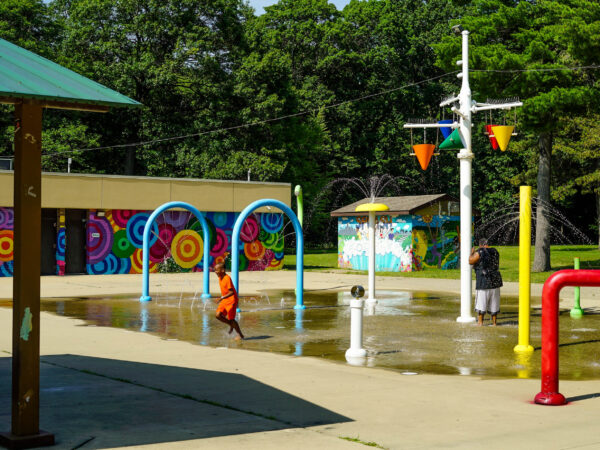
Heat Islands in the Great Lakes: Community, infrastructure and fresh water solutions
Heat is becoming a threat in cities everywhere. Here is the second half of our two-part series which looks at the connection between heat and health, the role water plays, what’s being done, and where these cities have room to improve.
Canada-U.S. mayors want to tap Great Lakes region’s water for economic transformation
“Sustainable prosperity” and innovation are key to mayors’ 10-year plan. Expert says economic transition from the Rust Belt era is more appropriate, cautions “today’s abundance may be tomorrow’s drought.”
Waves of Change: Meet educator and Friends of the Fox River president Gary Swick
Waves of Change is an online interview series highlighting the diverse faces and perspectives shaping the environmental justice movement throughout the Great Lakes region.

PFAS News Roundup: PFAS are shown to be unique bipartisan voting concern in Wisconsin
Catch the latest updates on what’s happening with PFAS in this biweekly headline roundup.
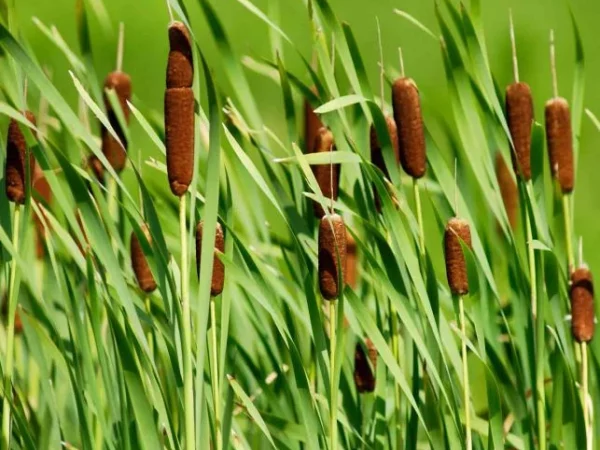
Finding creative new ways to manage invasive cattails
Scientists are thinking holistically about biodiversity, sustainability, and resilience when it comes to the role invasive cattails play in the Great Lakes.

Line 5 activist group wants Gov. Whitmer to “be an advocate” for shutdown
In a late move, the Department of Justice sides with Canada on continued operation of Line 5, citing treaty and the public’s interest.

Ghostly Grey Specters
How unprecedented water levels are fluctuating in the Georgian Bay, impacting the lives of long-standing residents, including humans and trees.
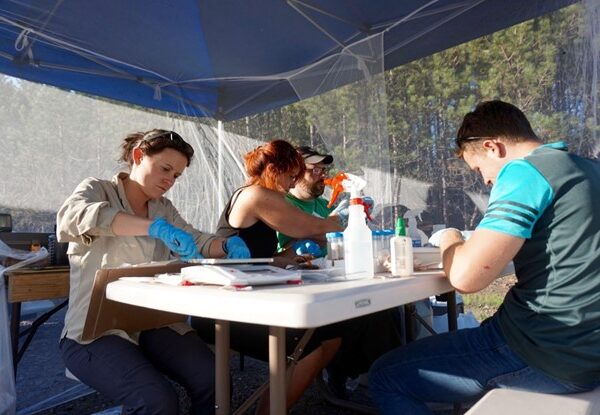
Through a Glass Darkly
Antidepressants can affect reaction times in fish and birth control gives male specimens female traits. How might pharmaceutical pollution impact life around the Great Lakes?
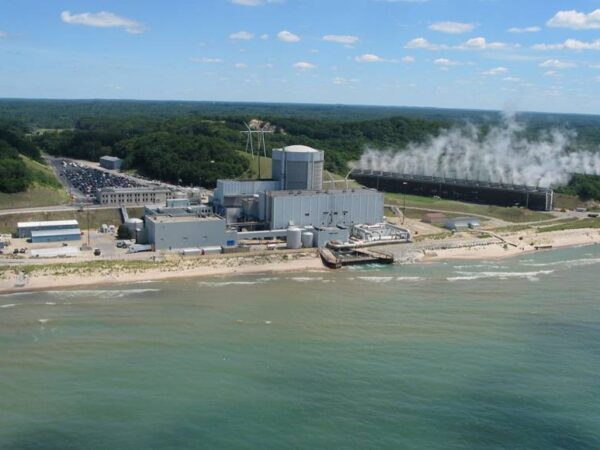
International nuclear energy expert questions Michigan’s Palisades restart
Holtec’s lack of nuclear operating experience is cited as a potential issue, and expert Mycle Schneider urges a focus on renewables.
Three Great Lakes commissions announce partnership to advance restoration
First-of-its-kind agreement takes aim at leading threats to Great Lakes region.
Waves of Change: Meet Milwaukee Water Commons Co-Executive Director Brenda Coley
We spoke with Brenda Coley, co-executive director of the urban network and non-profit organization Milwaukee Water Commons.
WATCH: Why Chicago will take decades to replace lead pipes
The EPA recently proposed new rules that would remove lead pipes from America’s drinking water infrastructure over the next decade. But with more lead pipes than any other city, Chicago is a notable exception.

Great Lakes Moment: Lest we forget – A history of Detroit River oil pollution
Today, the Detroit River is much cleaner, and sentinel wildlife species have returned. It is good to look back at the 1960s pollution of the river, notably oil pollution, and recognize how far we have come.
Waves of Change: Meet Wisconsin Green Muslims founder and director Huda Alkaff
We spoke with Huda Alkaff, an ecologist, environmental educator and the founder and director of Wisconsin Green Muslims.
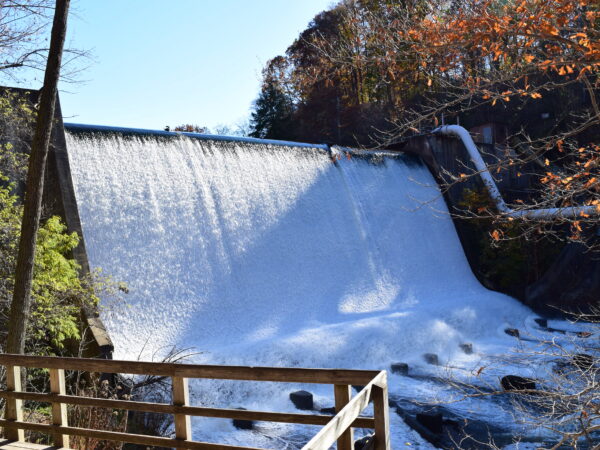
Great Lakes Moment: Ohio provides example for funding Detroit and Rouge rivers’ sediment cleanup
Ohio will soon embark on removing the Gorge Dam on the Cuyahoga River. Their approach could be a model for cleaning up contaminated sediments in the Detroit and Rouge rivers.
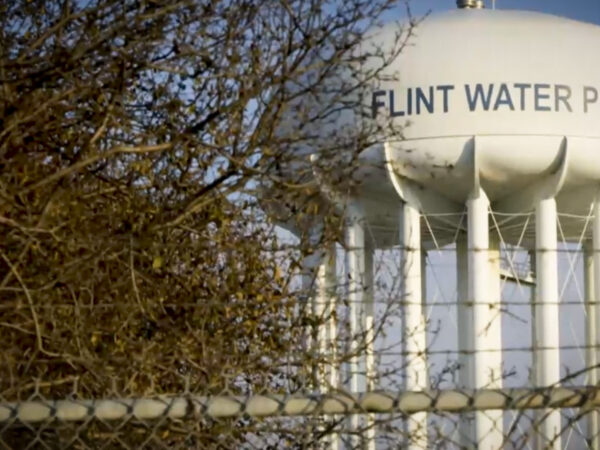
Great Lakes Now sits down with director of Flint water crisis film “Lead and Copper”
William Hart, director of a documentary about the Flint water crisis called “Lead and Copper,” joined Great Lakes Now’s Anna Sysling for a discussion about the film.
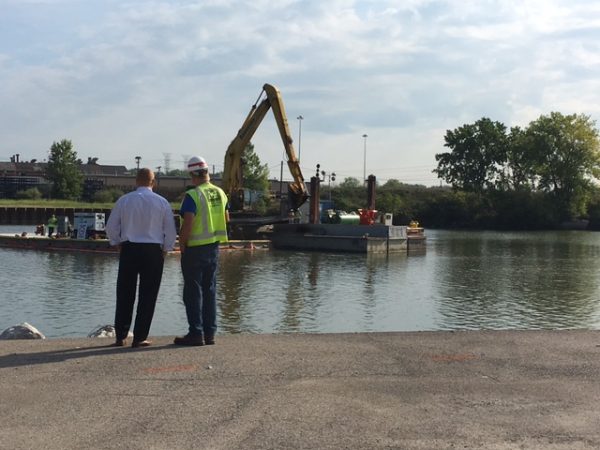
New EPA Great Lakes executive warns on “moon shot” cleanup goal for toxic sites
Greater effort, creativity needed to secure required funding at the state and local levels, lagging Detroit River effort “stands out.”

PFAS experts gather to address growing chemical crisis
In light of the ongoing PFAS crisis, stricter groundwater regulations were part of a Michigan statewide effort to protect resident’s health and improve water quality. This legal dilemma took center stage during EGLE’s fourth annual Great Lakes PFAS Summit.
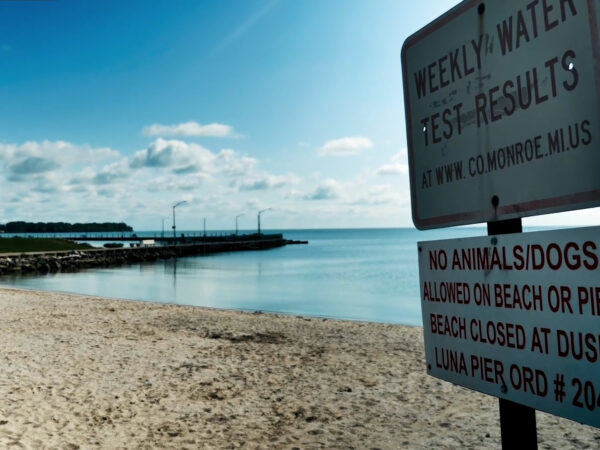
WATCH: Ontario’s greenhouse sector with The Narwhal
The Catch took a look at why experts are saying water from greenhouses in southern Ontario could be harming Lake Erie. Journalist and farmer Matt McIntosh recently reported on the issue for The Narwhal.

The Great Lakes Compact at 15: Region celebrates, veteran policy experts caution against complacency
“The compact is a step forward for the Great Lakes but it’s just the beginning of a long journey.”
WATCH: Milwaukee’s polluted hotspot
The Catch took a look at the largest project ever funded under a Great Lakes cleanup program. The aim is to remove contaminated sediments from a polluted hotspot in Milwaukee.
Latest News
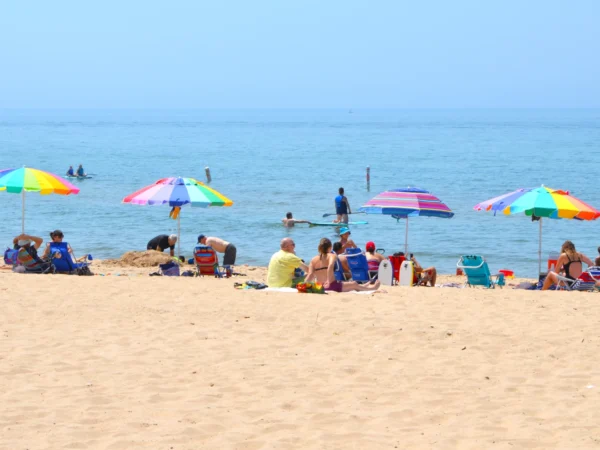
Heat, pollution, and climate change anxiety are affecting children
Hotter days make heat exhaustion a greater hazard for kids. Hotter days also can mean more ozone pollution and that leads to lung impairments. Unusual weather events, particularly storms that cause flooding, add stress to children’s lives.
Green infrastructure job trainings aim to support growing field
As more green infrastructure projects are installed across the state, more workers are needed to maintain them. Local organizations offer training for workers who want to expand their skills.
To tackle climate change, Michigan enlists a ‘corps’ of volunteers
To prepare local communities for climate change, Michigan and other states are borrowing from a long American tradition of civilian service programs. Meet the inaugural members of the MI Healthy Climate Corps.
How much can wetland restoration reduce farm fertilizers getting into Lake Erie?
Michigan has a program to restore a large wetland area to reduce fertilizer runoff from getting into Lake Erie because it feeds toxic cyanobacterial blooms that spread in the western basin.

Heat Islands in the Great Lakes: Community, infrastructure and fresh water solutions
Heat is becoming a threat in cities everywhere. Here is the second half of our two-part series which looks at the connection between heat and health, the role water plays, what’s being done, and where these cities have room to improve.
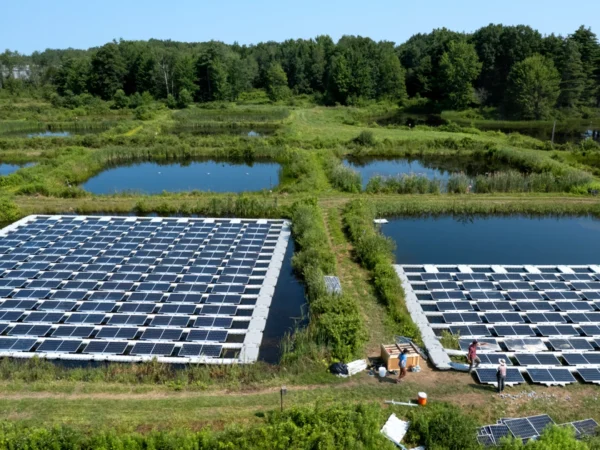
Why some municipalities are looking at putting solar panels on water
Floating solar panels are somewhat new in the U.S. In some places, the competition for land makes putting solar panel on plastic rafts feasible.
Canada-U.S. mayors want to tap Great Lakes region’s water for economic transformation
“Sustainable prosperity” and innovation are key to mayors’ 10-year plan. Expert says economic transition from the Rust Belt era is more appropriate, cautions “today’s abundance may be tomorrow’s drought.”
Drugs, microplastics and forever chemicals: New contaminants emerge in the Great Lakes
Scientists studying unregulated “emerging contaminants” say Ontario and the federal government need a coordinated plan to protect our water and health

Waves of Change: Meet activist and We the People of Detroit president Monica Lewis-Patrick
Waves of Change is an online interview series highlighting the diverse faces and perspectives shaping the environmental justice movement throughout the Great Lakes region.
In warming Great Lakes region, water, heat can be an unhealthy combination
From mosquitoes to sewer overflows, the heat and moisture of a changing climate are creating new health threats in the Great Lakes region, prompting a call to educate residents and doctors about the risks.
Bald eagles nearly died out. What can we learn from their return to the southern Great Lakes?
The pesticide DDT nearly wiped out North America’s bald eagles. Communities, scientists and politicians worked hard to bring this symbolic bird back from the brink.
Wildfire Rampage Injures Lungs in the Great Lakes
People are unprepared for smoke from forest fires worsened by intense drought and heat.
New study: Great Lakes beaches are littered with plastic trash
A group analyzed 20 years of beach cleanup data, finding that 86% of litter is composed at least partially of plastic.
Waves of Change: Meet educator and Friends of the Fox River president Gary Swick
Waves of Change is an online interview series highlighting the diverse faces and perspectives shaping the environmental justice movement throughout the Great Lakes region.

PFAS News Roundup: PFAS are shown to be unique bipartisan voting concern in Wisconsin
Catch the latest updates on what’s happening with PFAS in this biweekly headline roundup.
Michigan gets $290M boost for water upgrades as Flint crisis anniversary nears
Money from a bond voters authorized in 2002 is a big one-time boost for Michigan’s crumbling water infrastructure, but state officials say more is needed.

Finding creative new ways to manage invasive cattails
Scientists are thinking holistically about biodiversity, sustainability, and resilience when it comes to the role invasive cattails play in the Great Lakes.
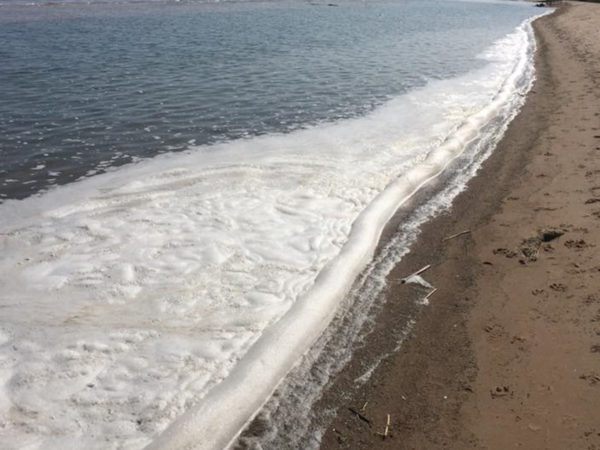
Good news for Michigan smelt season: PFAS levels lower than feared
State officials warned against eating too much of the silvery panfish due to high PFAS levels. Scientists now say that was an error, but aren’t yet ready to abandon fish consumption advisories altogether.

Line 5 activist group wants Gov. Whitmer to “be an advocate” for shutdown
In a late move, the Department of Justice sides with Canada on continued operation of Line 5, citing treaty and the public’s interest.

Ghostly Grey Specters
How unprecedented water levels are fluctuating in the Georgian Bay, impacting the lives of long-standing residents, including humans and trees.
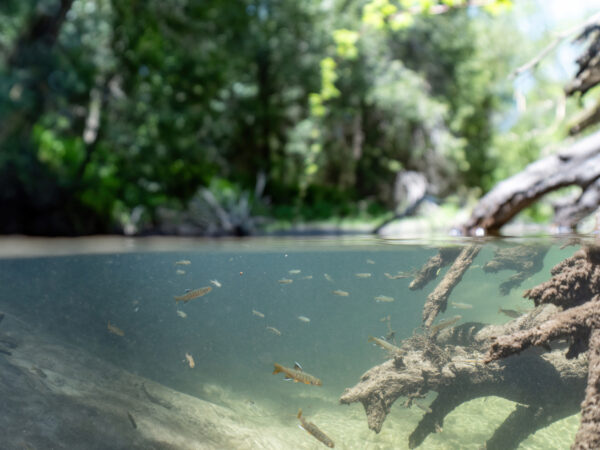
Wild fish spring to life in Lake Ontario, despite dams, pollution and hatchery competitors
Non-native species of salmon and trout have become an important part of Lake Ontario’s ecosystem. Keeping them healthy is often at odds with stocking fish for anglers.
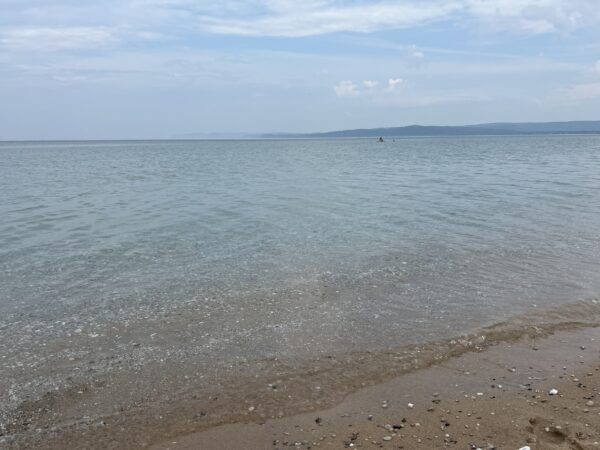
Sault tribe challenges Michigan fishing deal, chides ‘preposterous’ rules
With key species like whitefish nearing the brink of collapse, Michigan’s largest Native American tribe wants fewer restrictions on when, how and where its members can fish.
Palisades “work family” reunites for shot at reopening a Michigan nuclear plant
The Palisades Nuclear Plant in Covert Township could be the first shuttered nuclear facility to reopen in the U.S.
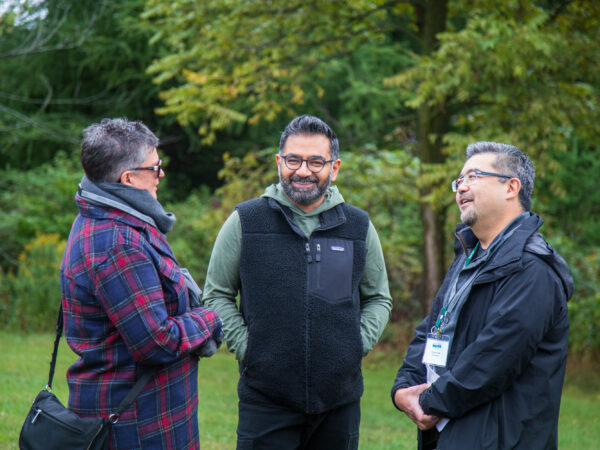
‘You start with us’: Conservation authority head has parting message for Ontario government
Outgoing CEO of Conservation Halton reflects on government cuts and how to enable development while protecting nature and future generations.

Through a Glass Darkly
Antidepressants can affect reaction times in fish and birth control gives male specimens female traits. How might pharmaceutical pollution impact life around the Great Lakes?

Feds award $1.5 billion for Palisades nuclear plant restart
Energy Secretary Jennifer Granholm touted the southwest Michigan plant as a key part of America’s energy future. Opponents questioned the safety of the 53-year-old facility.
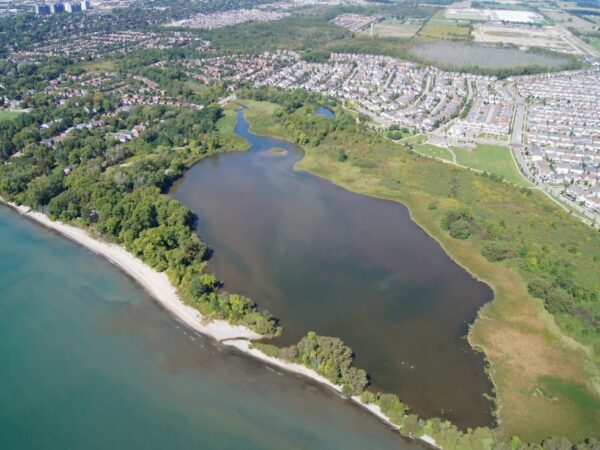
Ontario weakens watershed protections (again) as natural resources minister gets new powers
New rules reduce buffer zones between development and wetlands and empower Doug Ford’s cabinet to issue permits without their say.
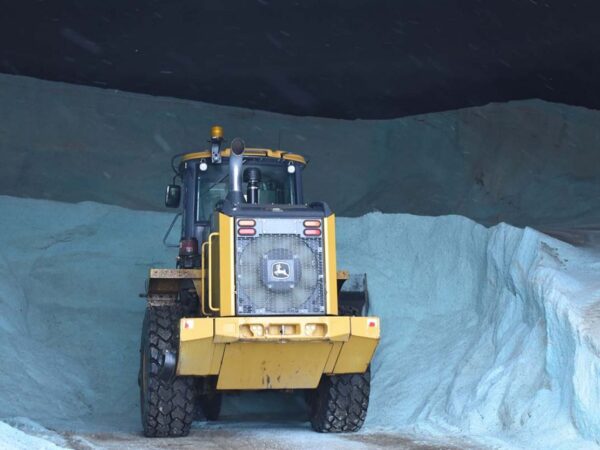
Road salt use dips 37% in Michigan warm winter, saving millions, easing pollution
Michigan in poised to save $10 million in road salt costs, bucking a trend of increased use — and pollution — in lakes, rivers and groundwater.

International nuclear energy expert questions Michigan’s Palisades restart
Holtec’s lack of nuclear operating experience is cited as a potential issue, and expert Mycle Schneider urges a focus on renewables.
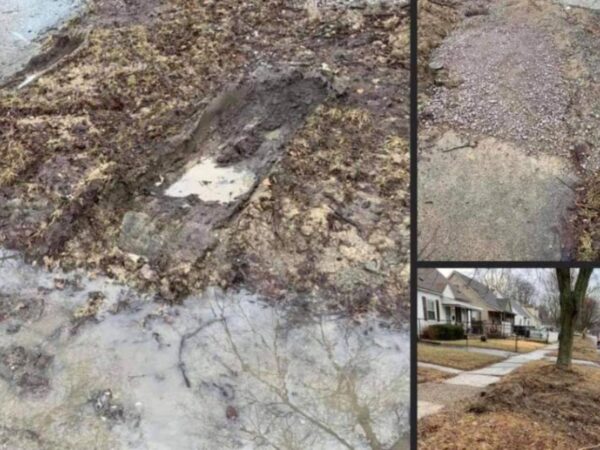
Judge holds Flint in contempt for continued lead pipe replacement delays
The city was supposed to finish replacing all lead service lines in Flint by 2020. The work still isn’t done. The ruling includes no financial penalties.
Three Great Lakes commissions announce partnership to advance restoration
First-of-its-kind agreement takes aim at leading threats to Great Lakes region.
“Bad River” documentary combines historical treatment of indigenous people with the fight to protect Lake Superior
Filmmaker Mary Mazzio talks about capturing the Bad River Tribe’s fight to shut down Line 5 oil pipeline.
Waves of Change: Meet Milwaukee Water Commons Co-Executive Director Brenda Coley
We spoke with Brenda Coley, co-executive director of the urban network and non-profit organization Milwaukee Water Commons.
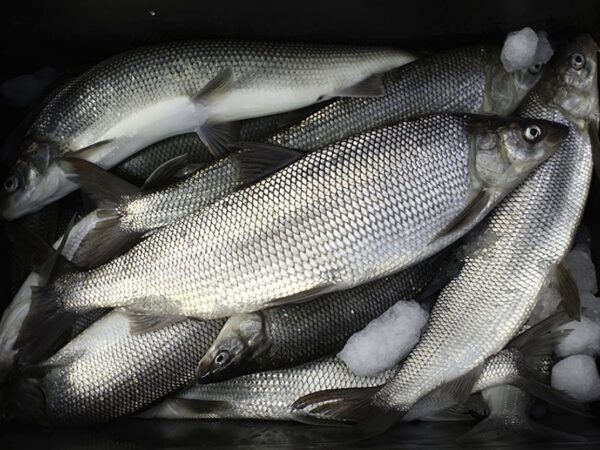
Whitefish are on brink in Michigan. Can they learn to love rivers to survive?
A staple for centuries, the fish are struggling to reproduce in the Great Lakes. So scientists hope to convince the whitefish to spawn in rivers, away from threats.
WATCH: Why Chicago will take decades to replace lead pipes
The EPA recently proposed new rules that would remove lead pipes from America’s drinking water infrastructure over the next decade. But with more lead pipes than any other city, Chicago is a notable exception.
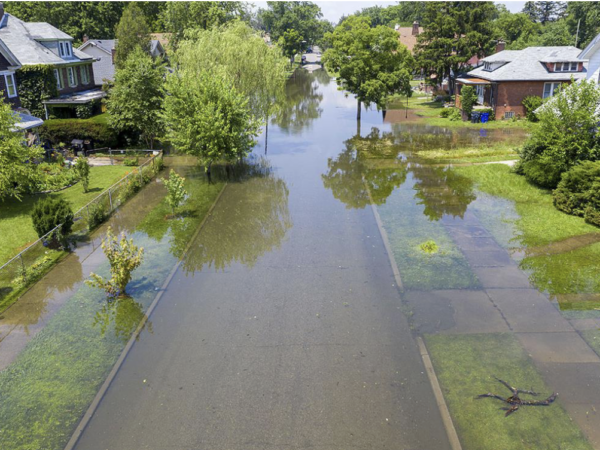
The future of water management, with Curt Wolf
After Detroit’s 2021 catastrophic flooding event, new ideas emerged about climate adaptation. Curt Wolf sat down with Great Lakes Now to discuss how the Michigan Center for Freshwater Innovation is bringing solutions to the table by getting everyone to the table.

As Michigan winters vanish, researchers study snow for clues about what’s next
Scientists once believed little important happened during winters. But as they vanish, the study of snowpack is increasing.

Reimagined St. Ignace memorial to be a showcase of Native American history
The DNR is rebuilding the Father Marquette National Memorial in St. Ignace. The exhibits, art work and signage will focus on the area’s rich Native American culture and history.
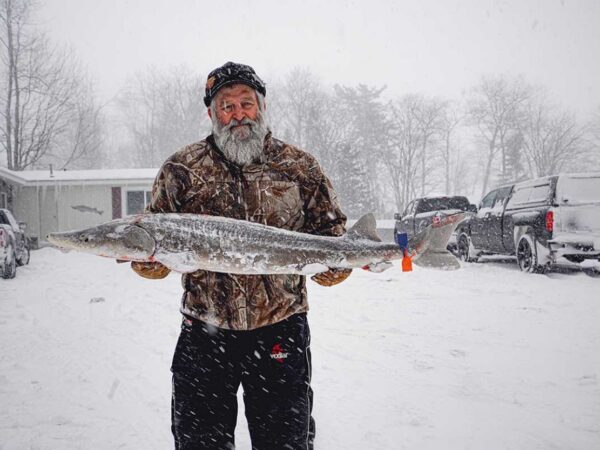
Michigan’s lost winter cancels sturgeon season, ski, dog sled races
Cancellations mount as Michigan experiences one of the warmest winters in memory. Experts blame El Niño and climate change.

Study calls for EPA to include human well-being in Great Lakes restoration program
Historically restoration work focused on measurable ecological outcomes. Researchers make the case to codify human well-being into the process.

Great Lakes Moment: Lest we forget – A history of Detroit River oil pollution
Today, the Detroit River is much cleaner, and sentinel wildlife species have returned. It is good to look back at the 1960s pollution of the river, notably oil pollution, and recognize how far we have come.
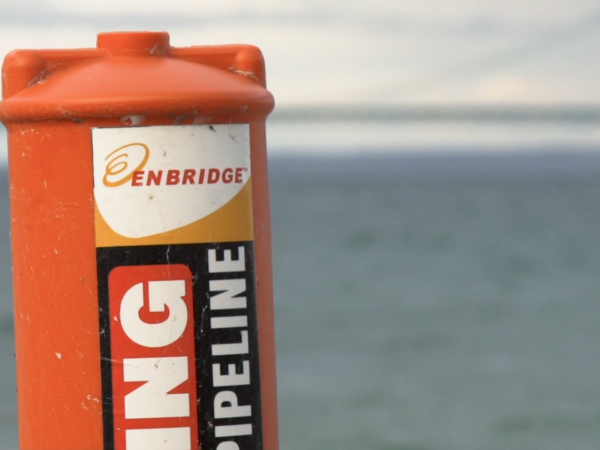
Ontario sides with Enbridge Gas in fight to connect new homes to natural gas
Saying fossil fuel use will decline, the Ontario Energy Board told Enbridge Gas to charge developers, not homeowners, for new natural gas hookups.
Flint residents reach $25M settlement with engineers in water crisis case
Engineering company Veolia North America settles class-action lawsuit before a trial was set to begin. The company consulted the city of Flint after its disastrous 2014 water switch.
Waves of Change: Meet Wisconsin Green Muslims founder and director Huda Alkaff
We spoke with Huda Alkaff, an ecologist, environmental educator and the founder and director of Wisconsin Green Muslims.
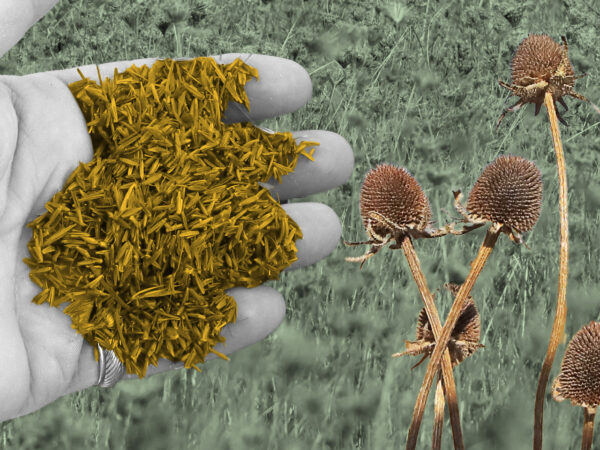
Restoring Ontario’s lost grasslands is as important as planting trees
Most of the grasslands that once dotted Ontario have been lost to development and agriculture. Bringing back these carbon-rich landscapes would be good for birds, bees, butterflies and people.
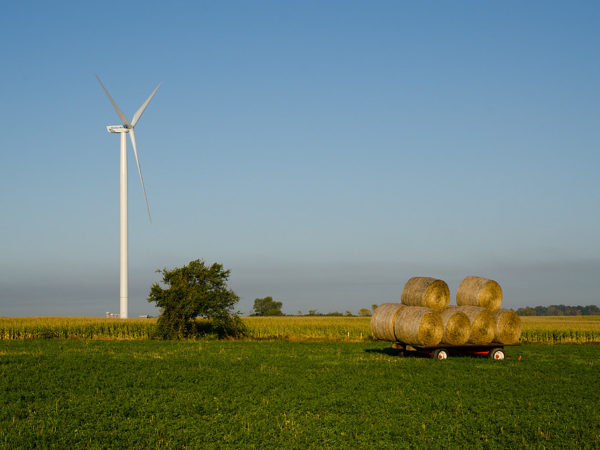
Michigan lawmakers have more energy priorities in 2024
Michigan lawmakers made sweeping changes to Michigan energy laws last fall. But plenty of items missed the cut, from community solar to finding solutions for Michigan’s outage-prone power grid.

Supreme Court poop dispute could have big impact on Michigan environment
How far can Michigan go in its quest to limit farm pollution in Michigan’s lakes and rivers? That’s the subject of a case now before the state’s highest court.
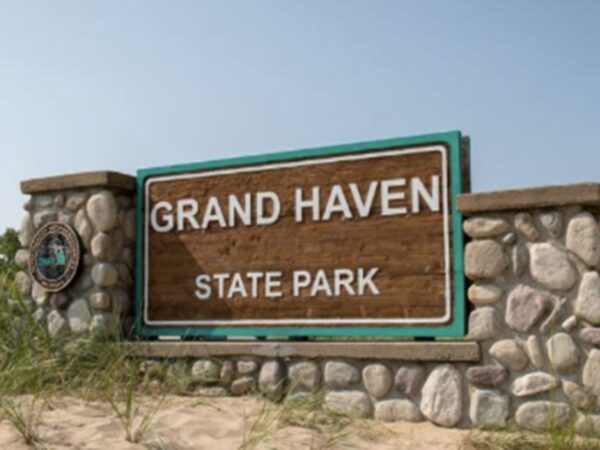
Michigan’s state park camping reservations are open and filling up quickly
Campsite reservations are 35-80 percent booked through July across Michigan’s state parks.

Great Lakes Moment: Ohio provides example for funding Detroit and Rouge rivers’ sediment cleanup
Ohio will soon embark on removing the Gorge Dam on the Cuyahoga River. Their approach could be a model for cleaning up contaminated sediments in the Detroit and Rouge rivers.
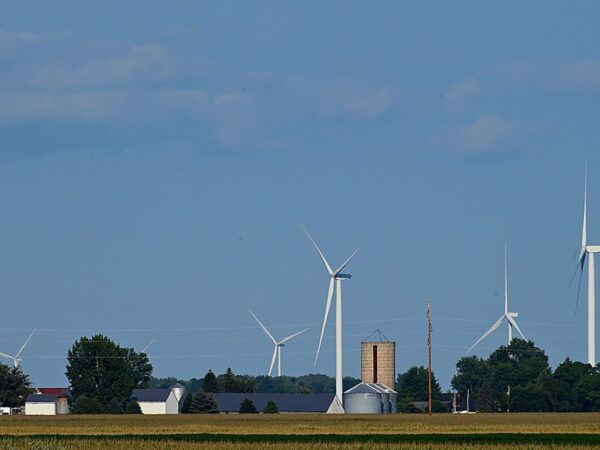
Group launches campaign to overturn Michigan solar siting law
Opponents of the new law, which stripped away local permitting control over large wind and solar projects, are pushing a ballot initiative that would ask voters in November to overturn the law.
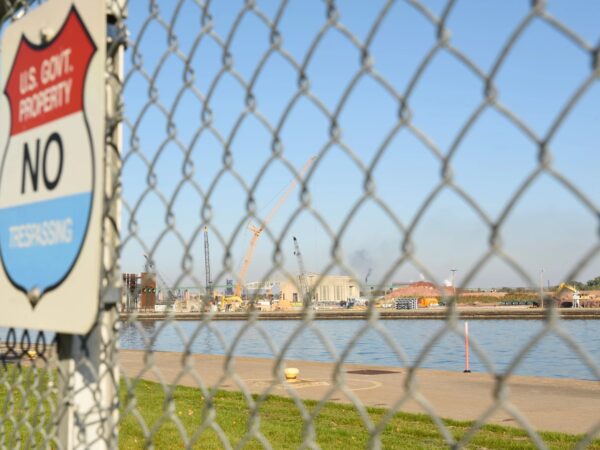
Upper Peninsula tribe closer to compensation for land seized by the U.S. government
The Keweenaw Bay Indian Community would get $34 million if legislation passed by the U.S. Senate is approved by the House and signed by President Joe Biden.

Great Lakes Now sits down with director of Flint water crisis film “Lead and Copper”
William Hart, director of a documentary about the Flint water crisis called “Lead and Copper,” joined Great Lakes Now’s Anna Sysling for a discussion about the film.

New EPA Great Lakes executive warns on “moon shot” cleanup goal for toxic sites
Greater effort, creativity needed to secure required funding at the state and local levels, lagging Detroit River effort “stands out.”

PFAS experts gather to address growing chemical crisis
In light of the ongoing PFAS crisis, stricter groundwater regulations were part of a Michigan statewide effort to protect resident’s health and improve water quality. This legal dilemma took center stage during EGLE’s fourth annual Great Lakes PFAS Summit.
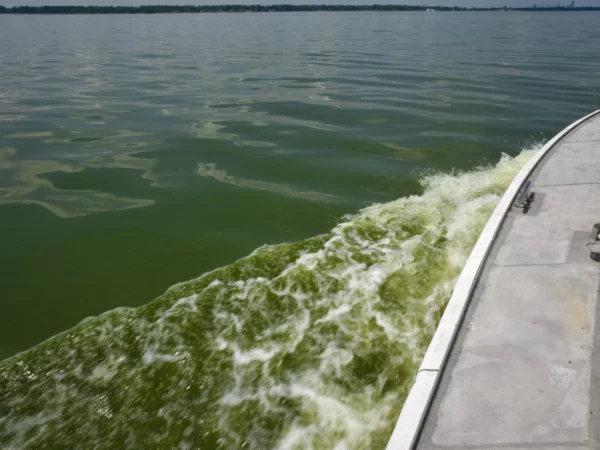
Can Michigan reduce phosphorus pollution getting into Lake Erie by 40 percent?
Michigan won’t reach the phosphorus reduction goal by 2025 as planned. It’s uncertain when it might attain that goal to help reduce cyanobacterial blooms in Lake Erie.
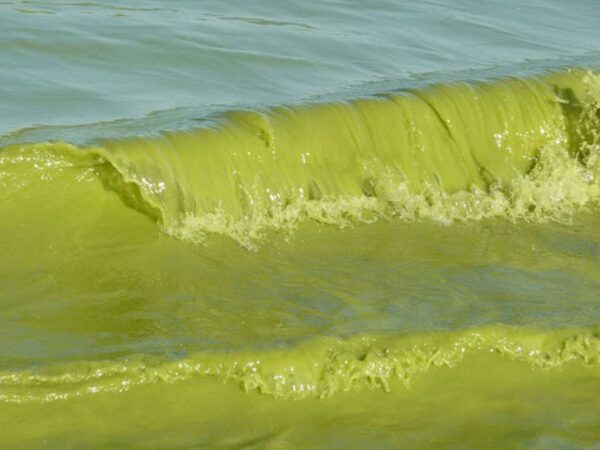
Michigan farm czar: Our fight against Lake Erie pollution isn’t working
Ahead of a gathering to assess the health of Lake Erie, Michigan acknowledges it won’t meet a 2025 deadline to cut phosphorus runoff into the lake by 40 percent.

WATCH: Ontario’s greenhouse sector with The Narwhal
The Catch took a look at why experts are saying water from greenhouses in southern Ontario could be harming Lake Erie. Journalist and farmer Matt McIntosh recently reported on the issue for The Narwhal.

The Great Lakes Compact at 15: Region celebrates, veteran policy experts caution against complacency
“The compact is a step forward for the Great Lakes but it’s just the beginning of a long journey.”
WATCH: Milwaukee’s polluted hotspot
The Catch took a look at the largest project ever funded under a Great Lakes cleanup program. The aim is to remove contaminated sediments from a polluted hotspot in Milwaukee.
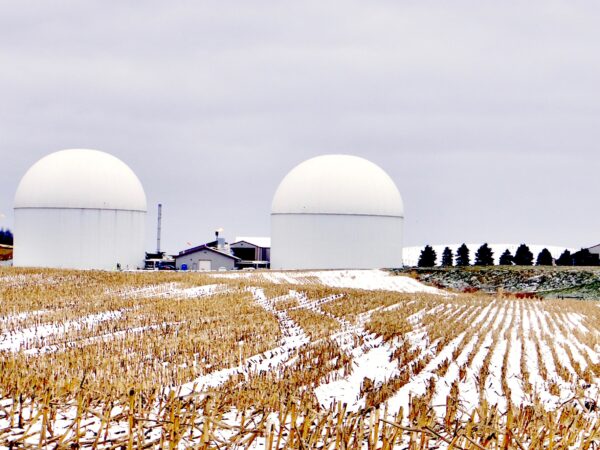
Will Energy From Manure Help or Harm Water Quality in Michigan?
Chevron and two utilities are building big methane biodigesters on the state’s largest dairies.
Book Review: Wisconsin author touches third rail of drinking water issues in new book
Can wastewater recycled for drinking water survive the court of public opinion?
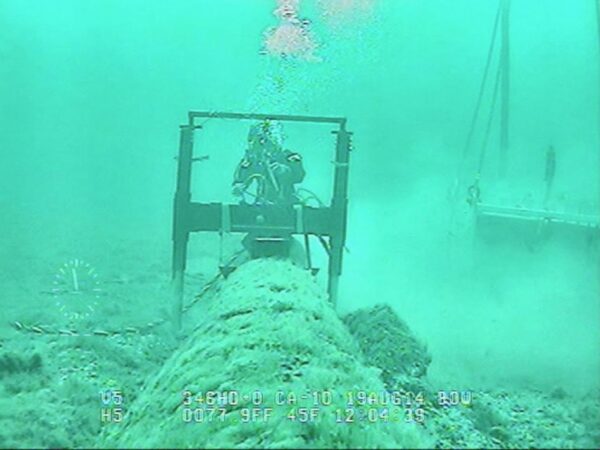
Michigan regulators approve key permit for Enbridge Line 5 tunnel
The ruling puts Enbridge Energy a step closer to tunnel construction despite opposition from environmental and Native American groups.
Waves of Change: Meet Executive Director Alicia Smith
We spoke with Alicia Smith, executive director of the Junction Coalition, a community nonprofit based in Toledo, Ohio.
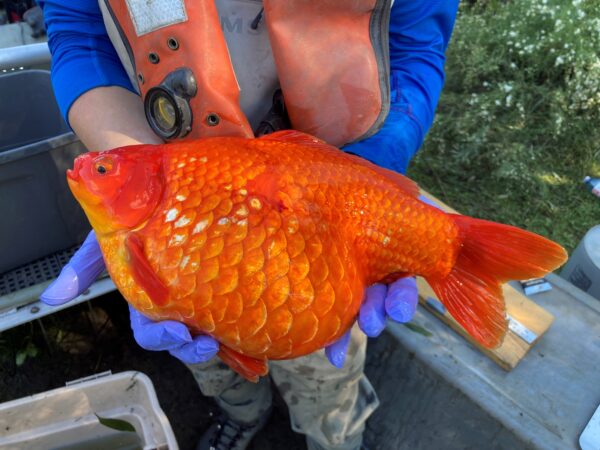
We’re going to need a bigger fishbowl
Tracking escaped goldfish in Hamilton Harbour could help control the invasive species.
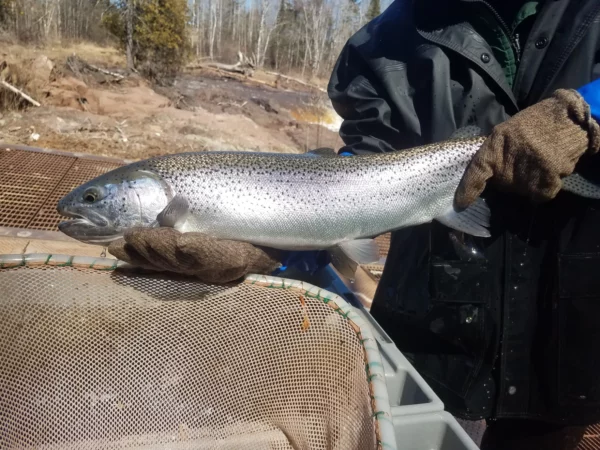
Concerns about Michigan steelhead populations prompt new catch limits
State regulators are ratcheting down the number of fish anglers can keep in some rivers, citing fears that the fish could be in trouble. State scientists disagree.

Wisconsin agency’s expanded mission led to record $450 million investment in Milwaukee waterways
Sewerage district leadership sealed the deal to remediate two million cubic yards of contaminated sediment
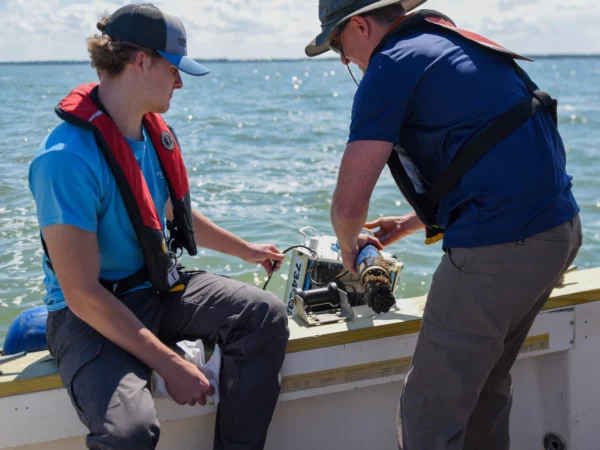
Building a Smart Lake Erie Watershed
Water quality sensors in Lake Erie are being networked to make more data accessible to researchers and government agencies, as well as the public.
No convictions for Flint: Attorney general ends water crisis prosecutions
A state prosecution team on Tuesday announced it’s given up on the effort to criminally charge public officials for the Flint water crisis. One unsurprised community leader called it “the norm” for a city repeatedly failed by the state.
Michigan steps up dam removal in race against climate change
As climate change threatens to warm Michigan rivers, dam removal can drive temperatures down by several degrees. An influx of money has boosted removal efforts, but advocates say more is needed.
The spawn from lake sturgeon in Michigan to be introduced to Cuyahoga River
The progeny of lake sturgeon from Michigan will be released into the Cuyahoga River at Cleveland, Ohio.
Michigan water rights advocate questions effectiveness of proposed affordability legislation
Too much “wiggle room” for utilities, plus temporary assistance program doesn’t address underlying issues, says Monica Lewis-Patrick.

Wetland banks save cities, townships, and counties money for building roads
Buying wetlands on the commercial market is expensive. The state of Michigan set up a program to give municipal road agencies a way to mitigate damage to wetlands more cheaply.
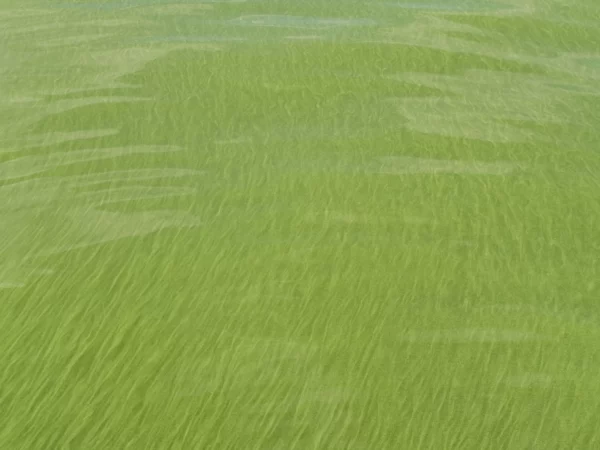
US EPA okays Ohio plan to reduce toxic cyanobacterial blooms; Environmentalists say it won’t work
Environmentalists say the Ohio plan will not work because it doesn’t hold agriculture responsible for the runoff from fields using manure from factory farms as fertilizer.
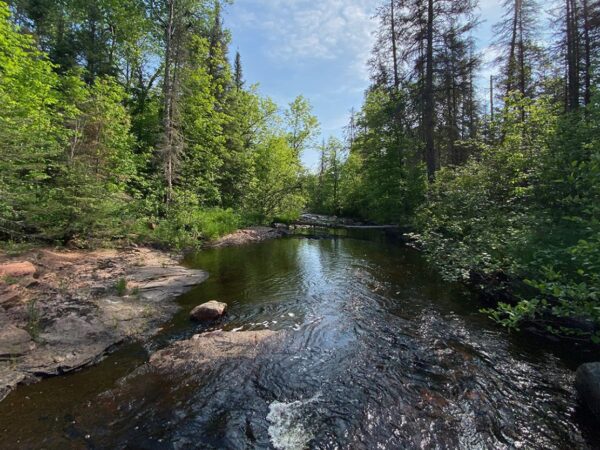
In warming Great Lakes, climate triage means some cold waters won’t be saved
Government officials begin the grim task of prioritizing which cold lakes and rivers to sacrifice — or save — as the climate changes. Not all cold-water loving fish may survive in the northern Great Lakes region.
WATCH: Supreme court un-protects many U.S. wetlands
There is concern about millions of acres of wetlands across America, including the Great Lakes region, following a U.S. Supreme Court decision.
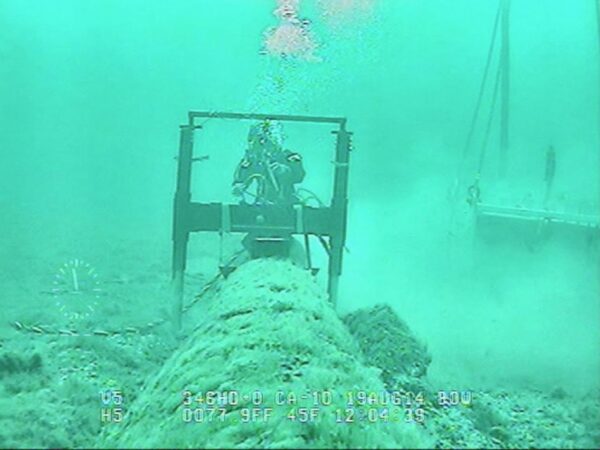
Enbridge: Federal review of Line 5 tunnel permit is ‘inexplicably lethargic’
The Canadian energy giant pleads with Michigan officials to intervene, saying federal authorities are slow-walking their review of a key permit needed to build a tunnel in a pipeline under the Straits of Mackinac.
Climate change is harming Michigan hunting and fishing, groups warn lawmakers
Michigan’s wild places are under threat as warmer temperatures cause species to migrate northward and rivers to overheat. Advocates called for more resources to protect Michigan’s fish and game from those changes.
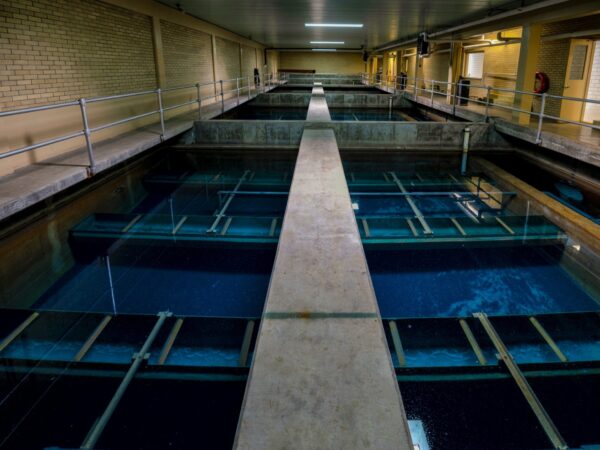
Clock ticks for water utilities to join national PFAS settlements
A decision is needed soon for funds to remove toxic chemicals from drinking water.

State of Michigan sues Gerald R. Ford Airport Authority for PFAS pollution
The Michigan Attorney General’s office sued the Grand Rapids airport authority on behalf of EGLE over a dispute on responsibility for PFAS contamination.
WATCH: Great Lakes Critical Programs Act of 1990
Student journalist Jada Vasser took a look at the Great Lakes Critical Programs Act of 1990 and the impact it has had on the lakes. The legislation gave the Great Lakes region specific standards of water quality that needed to be met in order for the lakes to be used for things like fishing, recreation and more.
WATCH: Harmful algal blooms with Michigan Radio
The Catch featured an ongoing and serious concern is back in Lake Erie: harmful algal blooms. The blooms exist throughout the Great Lakes, but are especially pervasive in the western basin of Lake Erie.
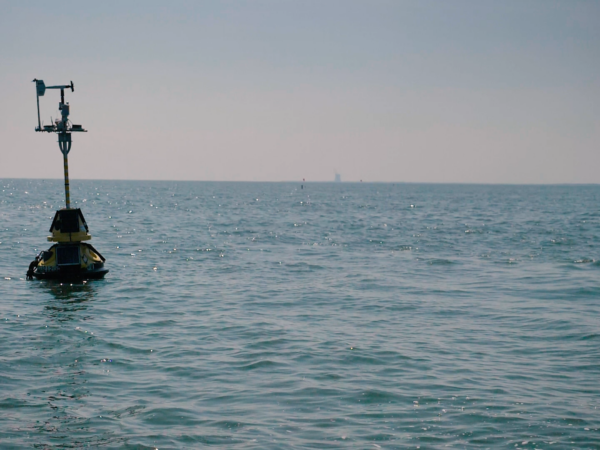
Researchers: Current Great Lakes stewardship is “ill-equipped” to handle future challenges
University of Michigan report calls for new guiding principles and leaders with skills to work across disciplines.

Government watchdog: EPA slow to raise alarm in Benton Harbor water crisis
Government auditors say EPA officials failed to follow a new “elevation policy” that’s meant to generate a stronger response to the most urgent environmental and public health threats.
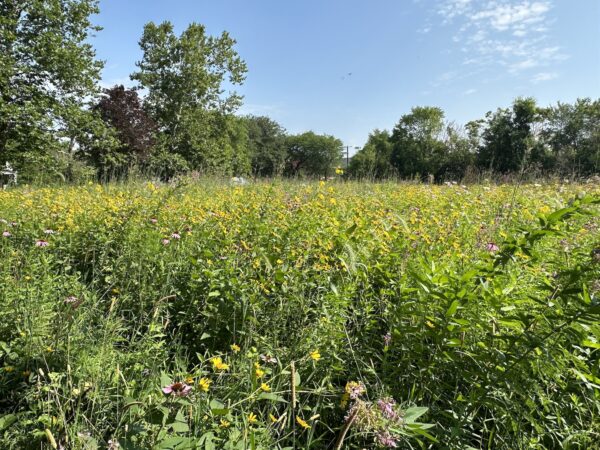
Grassroots greenspace projects expand Detroit’s open space network
Activists aim to enrich their neighbors’ quality of life and deepen their connection to nature.

Chicago Suburbs, Running Out of Water, Will Tap Lake Michigan
America’s groundwater is now running dry where water is abundant.
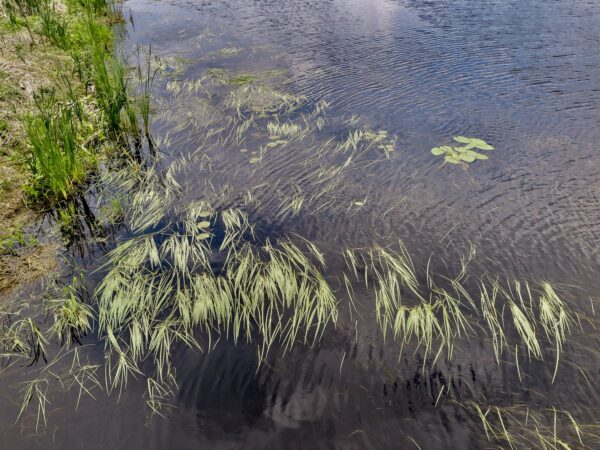
Minnesota Tribe Sets Enforceable Rules To Safeguard Wild Rice and Water Supply
Ineffective voluntary pollution prevention practices are set aside for mandatory regulation.
What’s being done about plastic trash getting into the Great Lakes?
As researchers learn more about the hazards of plastics and microplastics in the Great Lakes, it’s becoming clear Canada and the U.S. need to cooperate in stopping the pollution.
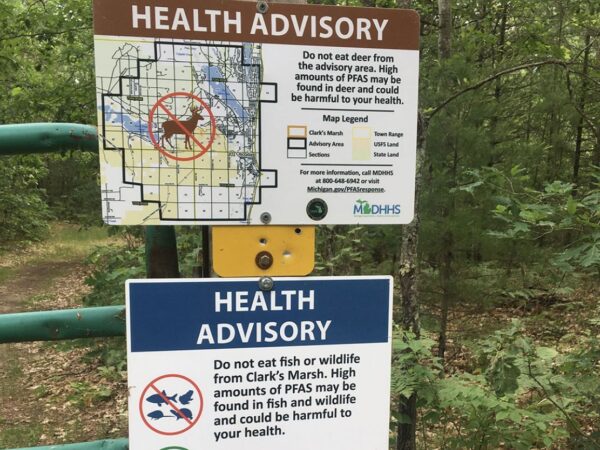
Pentagon to address PFAS at Wurtsmith base near Oscoda
Military officials announced they will install groundwater treatment systems around the former Wurtsmith Air Force Base to clean up chemical compounds linked to serious health issues.
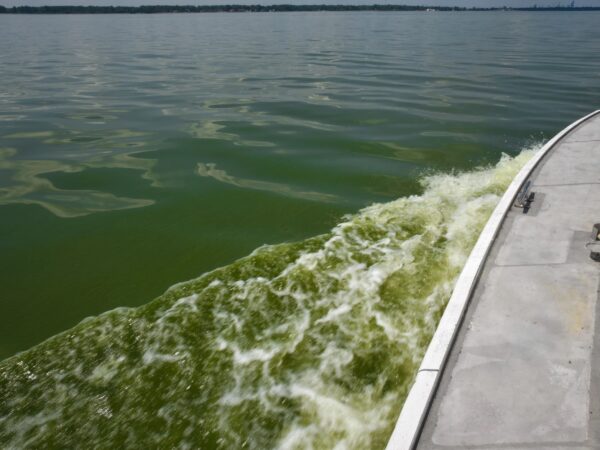
Toxins from cyanobacterial blooms can be airborne, but the threat to public health is unclear
Researchers are studying how much of cyanobacterial toxins become airborne. They say breathing in the toxins is much worse than ingesting them.
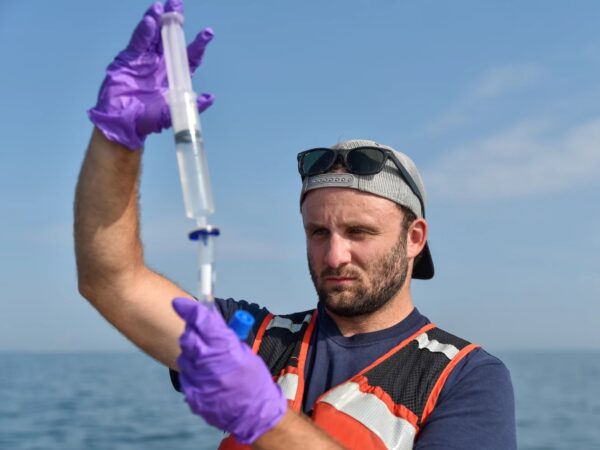
Scientists are learning just how complicated it will be to reduce toxic blooms in Lake Erie
Two decades of study reveals a complex combination of factors causing large cyanobacterial blooms and their toxicity. Government incentives to reduce nutrient pollution from farms have not been enough to solve the problem so far.
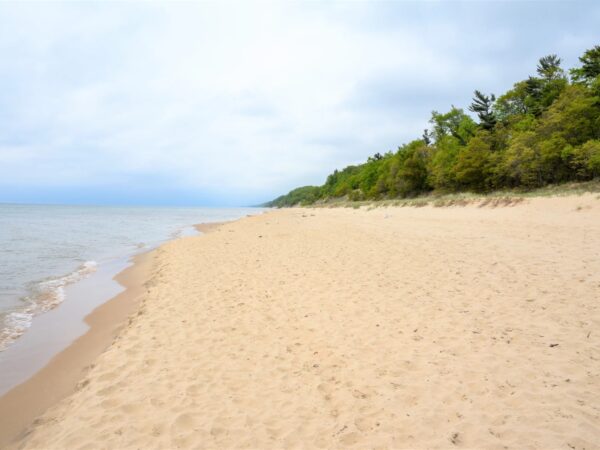
New federal money is the start of an effort to make Great Lakes coasts more resilient
Federal money can be used to restore wetlands, buy property to use as a buffer, and invest in nature-based infrastructure.
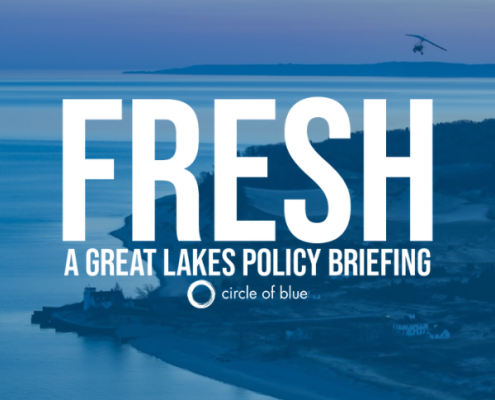
FRESH: As Chicago Broils, Citizens and Scientists Study ‘Heat Island’ Effect
Coinciding with the summer’s extreme heat and citywide water pressure decreases, citizen and government scientists continue to map heat islands in Chicago.

Filmmaker looks at Detroit through the lens of water, life events and justice
Youthful visit to the Detroit River was a “profound experience” for dream hampton.

Control for Frog-bit and Water Soldiers
New strategy for limiting the spread of exotic water plants in Michigan.
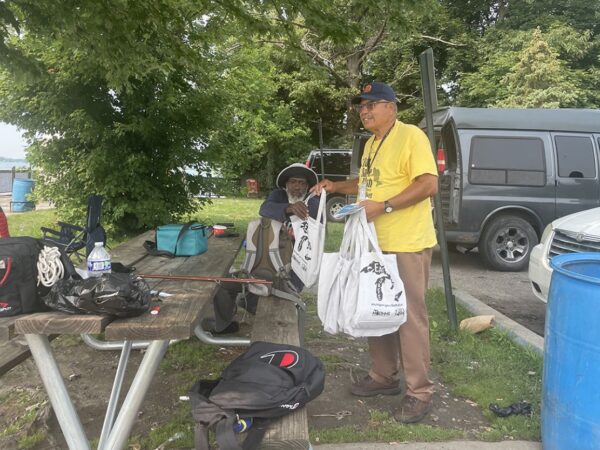
Michigan ‘river walker’ program warns anglers on eating contaminated fish
Industrial pollution taints the fish in a host of Michigan rivers, but anglers often don’t know the risks. River walkers like Jim Bridgforth aim to change that — but not everyone has the luxury of skipping a fresh-caught meal.
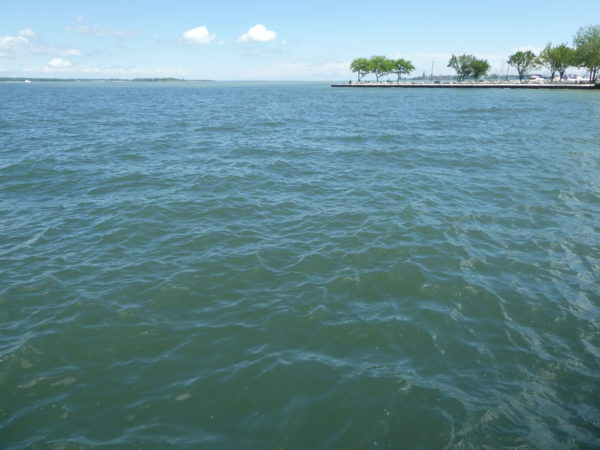
Amendment to Clean Water Act improves Great Lakes through critical observation, collaboration
The Great Lakes region has seen significant improvement since the river fires of 1969, bringing people back the waters they know and love.
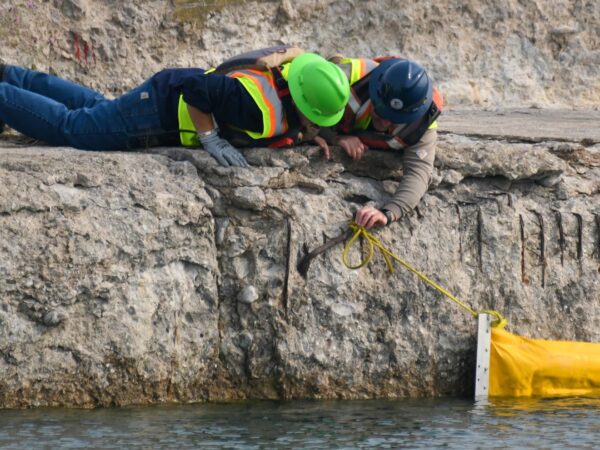
Preparing for a Great Lakes oil spill
By Lester Graham, Michigan Radio The Great Lakes News Collaborative includes Bridge Michigan; Circle of Blue; Great Lakes Now at Detroit Public Television; and Michigan Radio, Michigan’s NPR News Leader; who work together to bring…

Diesel spill on Lake Michigan triggers multi-agency response
Up to 46,000 gallons of diesel fuel may have spilled into Lake Michigan from a large ship. It triggered a multi-agency response, including the US Coast Guard, EGLE, and ship owners.
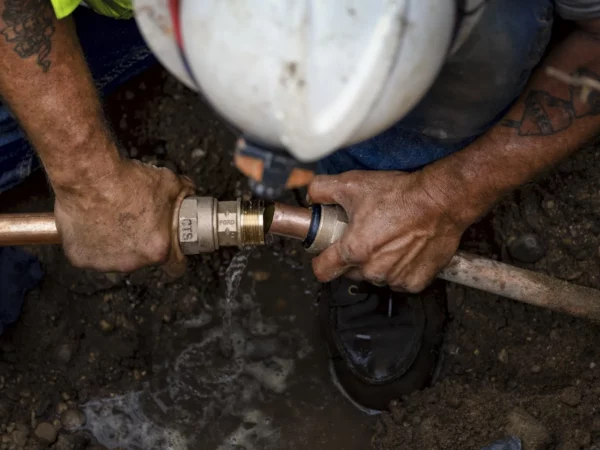
Workers needed to fulfill America’s infrastructure goals
Local and corporate dollars will pay for some of these projects. But the infrastructure push is catalyzed by federal action.
Research vessels are on the Great Lakes, but there’s no crew on board
Autonomous research vessels are gathering data about fish in the Great Lakes.

Michigan bald eagles soar back from near-extinction
In 1961, Michigan’s bald eagle population dipped to 52 breeding pairs. Bans on DDT and other harmful chemicals fed a recovery. But the national bird still faces threats from lead bullets and sprawling development.
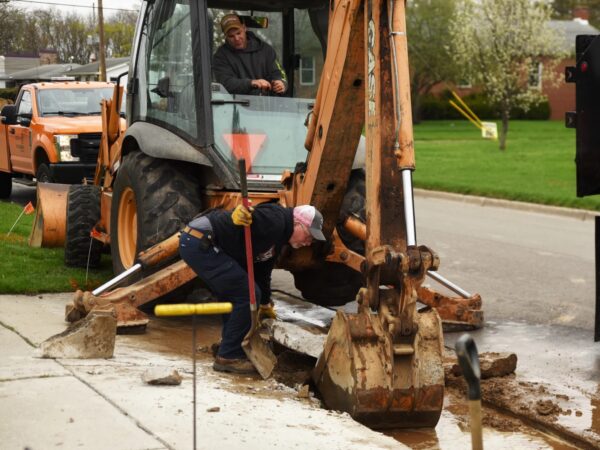
US House budget proposal cuts funds for water system upgrades and polluted communities
The Republican-led House of Representatives is proposing to cut funds for the EPA, water distribution system repairs, and pollution cleanup.
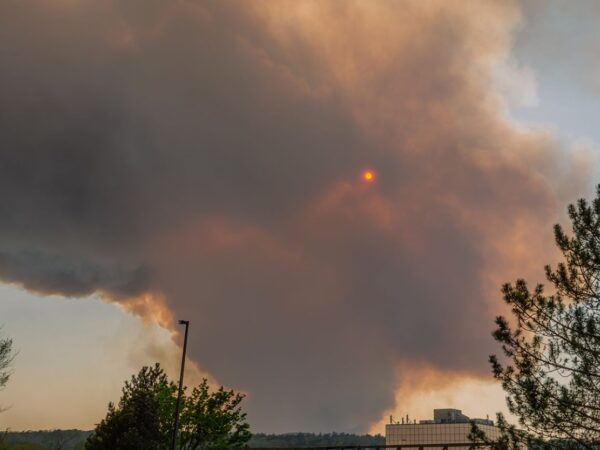
Michigan air quality unhealthy again Monday because of Canadian wildfires
Smoke blowing from Canadian wildfires hits Michigan again prompting an air quality alert. Haze from hundreds of fires has remained an issue much of the summer.
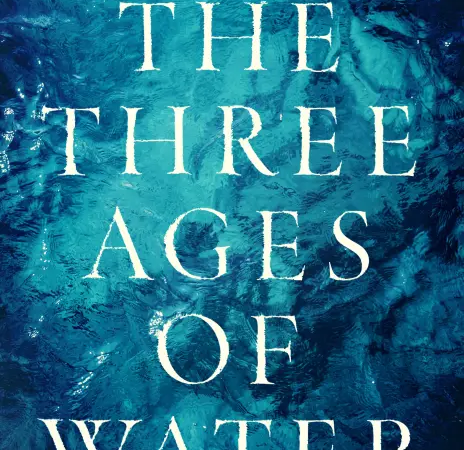
Book Review: Scientist offers positive vision to avoid dystopian future in “The Three Ages of Water”
In his new book, California’s Peter Gleick says we are at a choice point after centuries of degrading our water resources.
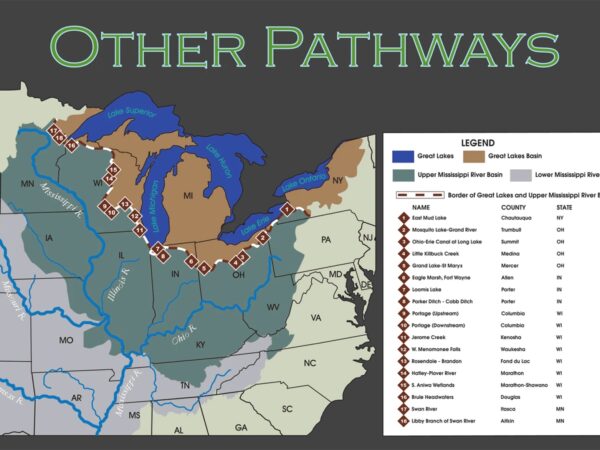
Nearly $1.2 billion spent at one site to deter invasive carp from Great Lakes; other entry sites still possible
Nearly $1.2 billion is to be spent at one site to prevent invasive carp from entering the Great Lakes. There are a dozen more places where the carp could get in.
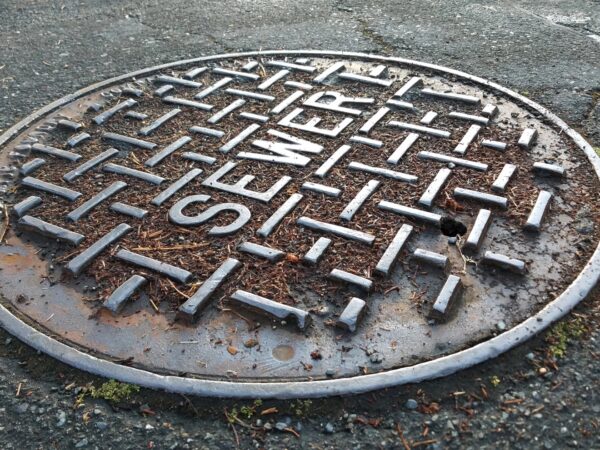
No contact advisory in place for part of St. Joseph River
An estimated 500,000 gallons of untreated wastewater have been discharged into the St. Joseph River.
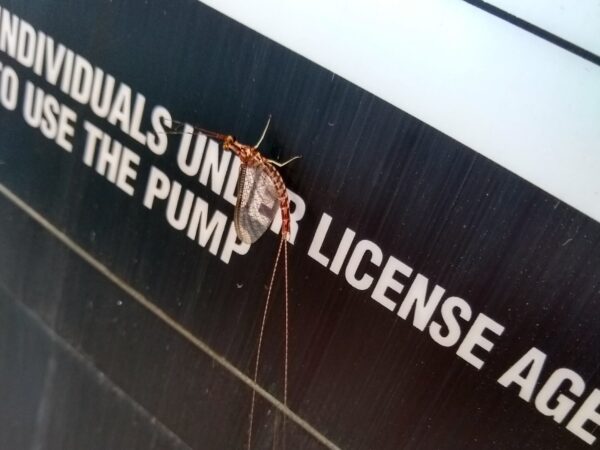
“It’s a good thing”: Fishflies in Great Lakes region signify healthy water
Even though fishflies may not be the prettiest insects, they represent good. A large number of fishflies near the Great Lakes area means the water is healthy.
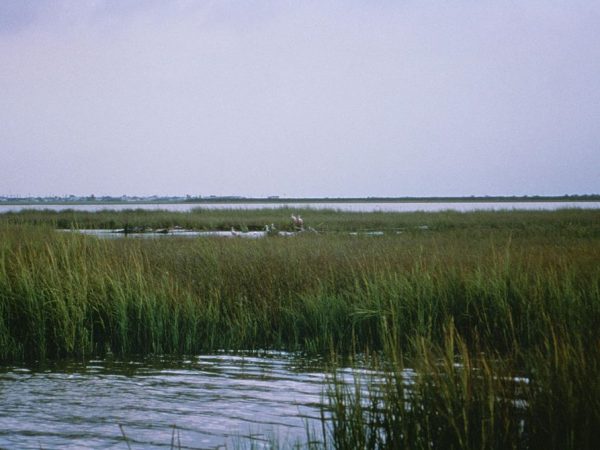
What are wetlands for, anyway?
Here’s what to know about how the U.S. Supreme Court ruling in Sackett v EPA changing wetland protection impacts the Great Lakes region.
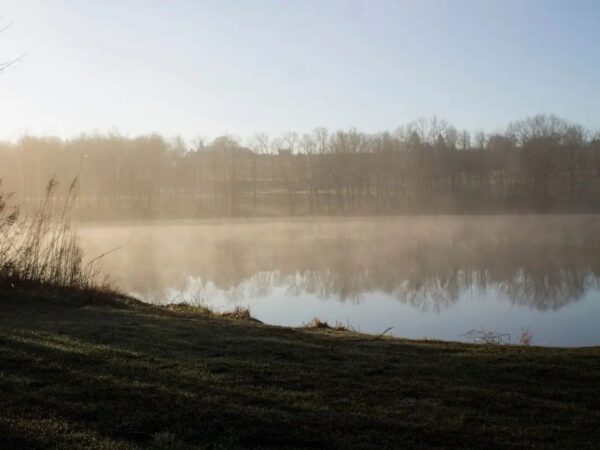
Michigan removes derogatory Native slur from Oxford Township boat launch
The DNR is renaming a boat launch in Oakland County from “Squaw Lake” to “Paint Lake” as part of an effort to erase the name from more than 600 sites, including 32 in Michigan.

Harmful algal blooms appearing on Lake Erie earlier than usual
NOAA satellite images and a research vessel sampling Lake Erie water both found evidence of harmful algal blooms on July 5, a much earlier date than typical.

PFAS News Roundup: Technology to eliminate ‘forever chemicals’ showing positive results
Catch the latest updates on what’s happening with PFAS in this biweekly headline roundup.

Will Michigan’s Largest Water Provider Target Tiny City For Next Shutoffs?
Highland Park, a tiny and steadily shrinking city north of downtown Detroit, was once the center of an industrial empire that built the vehicles that shaped 20th century America.
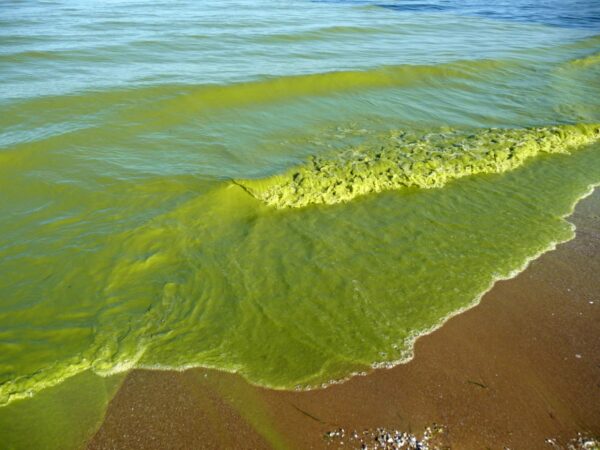
Lake Erie harmful algal bloom expected to be smaller than average
Last year’s severity index was at 6.8. Rick Stumpf with the National Oceanic and Atmospheric Administration says this year’s severity is expected to be around 3.
WATCH: A community fights for a cleaner future
The Southeast side of Chicago at the southern end of Lake Michigan was once an industrial powerhouse. Steel was the main product and thousands had good paying jobs. But, when those jobs started drying up, an industrial wasteland was left behind. After years of being surrounded by toxic waste, residents are fighting back.

How to stay informed about air quality in Michigan
Information about air quality is being updated via several government sites. Here’s where you can go for answers and how the sites work.

Science Says What? Bacteria in Lake Huron sinkhole do a daily tango
Home to brilliant purple mats of cyanobacteria and white floating ponytail-like bacteria, the sinkholes have always struck me otherworldly, almost dreamy.

A patchwork of differing state laws to protect wetlands
Federal protections for many wetlands have been removed. Some states have laws to protect those wetlands, but some are stronger than others.
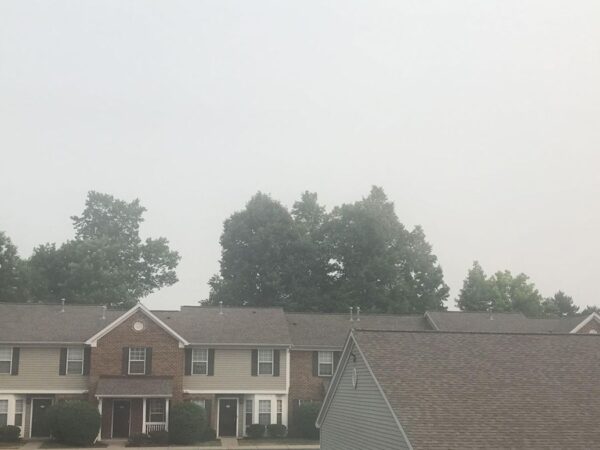
Michigan under statewide advisory as Canada wildfire smoke hits Midwest
Millions of Michiganders are under advisory through Wednesday after air currents pushed smoke from Canada wildfires to Michigan and other parts of the Midwest.

Nessel: $10B PFAS settlement with 3M doesn’t resolve Michigan’s claims
Michigan communities with PFAS in their water supply could be eligible for payments from chemical manufacturer 3M, after the company reached a $10.3 billion settlement.

FRESH: Federal Judge Orders Line 5 Shutdown on Tribal Land in Wisconsin
Fresh is a biweekly newsletter from Circle of Blue that unpacks the biggest international, state, and local policy news stories facing the Great Lakes region today.
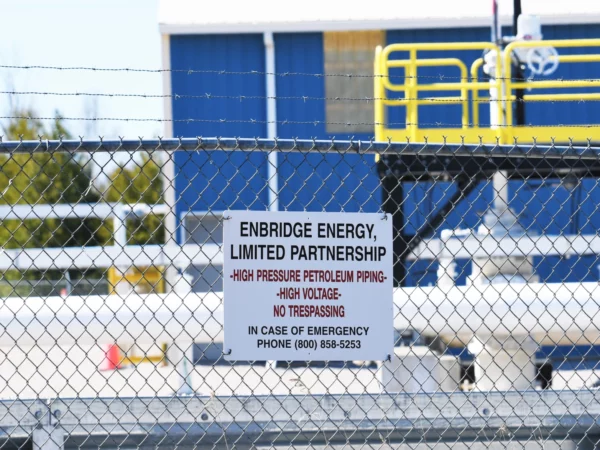
Judge orders segment of Enbridge’s Line 5 shut down and moved off of Native American land
A federal judge ordered a segment of Line 5 to be moved within three years. Enbridge said it will appeal.

PFAS News Roundup: Everyday items found contaminated, PFAS removal in Minnesota estimated to cost billions
Catch the latest updates on what’s happening with PFAS in this biweekly headline roundup.
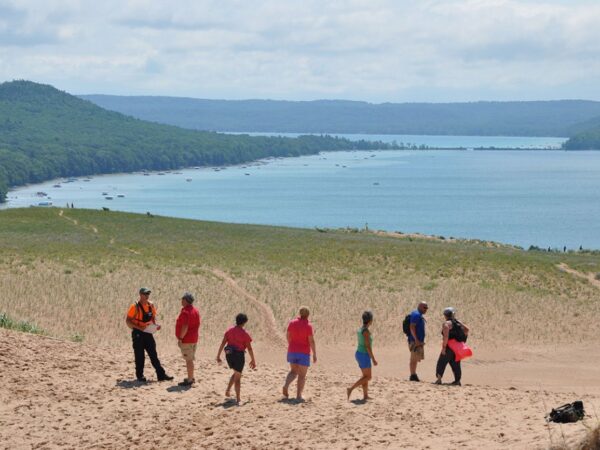
Can climate migrants offset Michigan’s population woes? Maybe, experts say
As Michigan economic development officials fret over population loss that threatens the state’s future, some see a potential solution in so-called “climigrants” fleeing extreme weather.

FRESH: Bid to Fund Invasive Carp Barrier Falls Short in Minnesota’s State Legislature
Fresh is a newsletter from Circle of Blue that unpacks the biggest international, state, and local policy news stories facing the Great Lakes region.
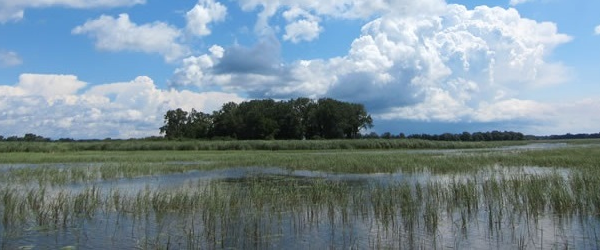
Landmark Great Lakes coastal wetland program continues restoration drive that began in 2010
Climate change is causing scientists to cope with unpredictable challenges.
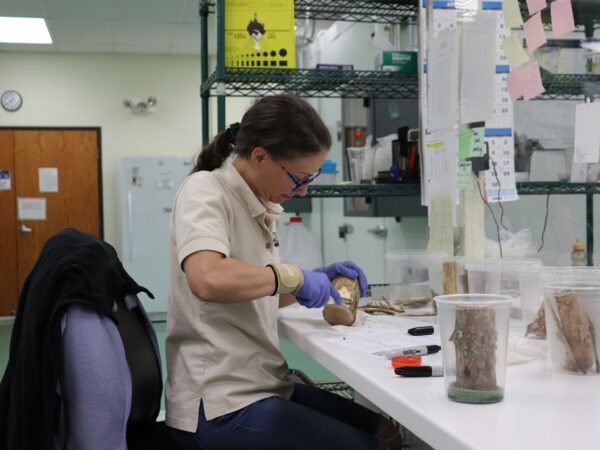
Inside the Michigan lab where scientists raise killer bugs to save trees
The emerald ash borer, an invasive beetle that feeds on ash wood, has killed hundreds of millions of ash trees across North America. The key to saving what’s left may be growing behind paned glass in a quiet Brighton business park.

PFAS News Roundup: 3M being investigated for contamination, New safety bills introduced in Michigan
Catch the latest updates on what’s happening with PFAS in this biweekly headline roundup.
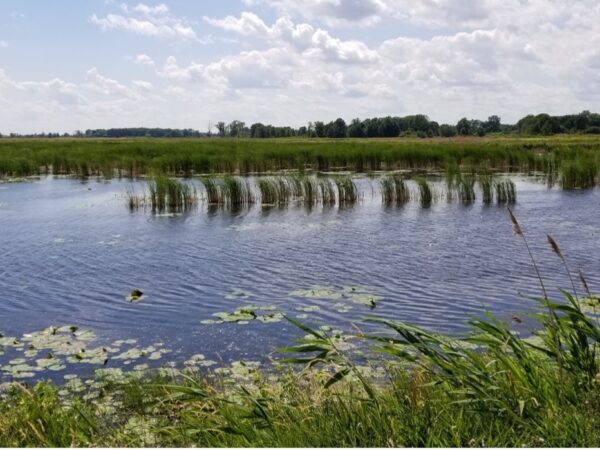
Great Lakes Moment: New trail connects people with secluded Detroit River wetlands
The new Grosse Ile Township greenway trail is designed to improve public access to the Detroit River International Wildlife Refuge’s Gibraltar Bay Unit.

The Endangered Species Act turns 50: Congress is working to weaken it
The U.S. Senate has approved three changes to remove protections from threatened and endangered wildlife.
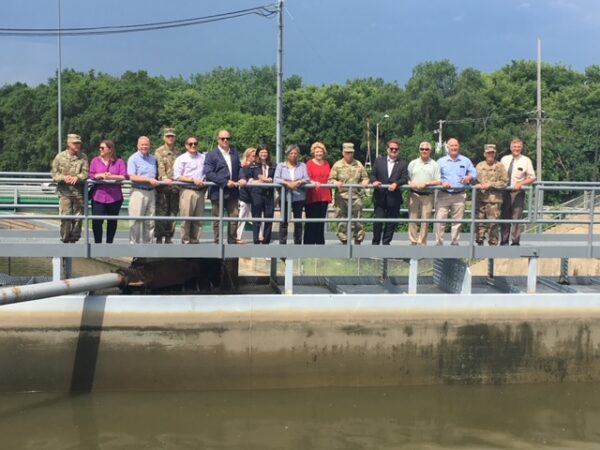
Illinois, feds grapple with agreement that would advance billion dollar plan to stop invasive carp
Illinois objects to terms of “complex” partnership agreement required by the Army Corps of Engineers, while Michigan policy expert questions the need.
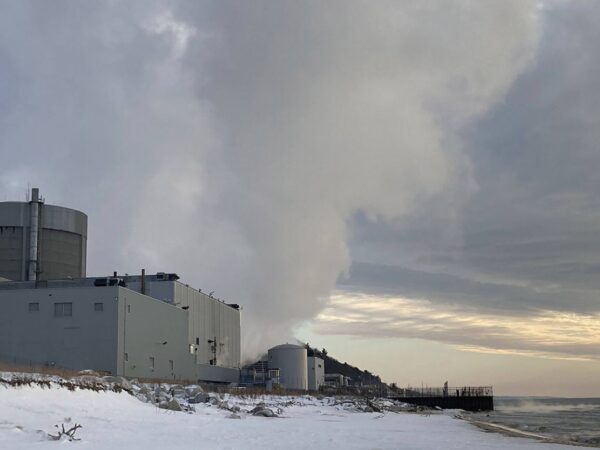
Michigan lawmakers pledge ‘full support’ for reopening Palisades nuclear plant
The push to repower the shuttered Palisades nuclear power plant has momentum in Lansing, with a bipartisan caucus pledging support for the plant’s revival.
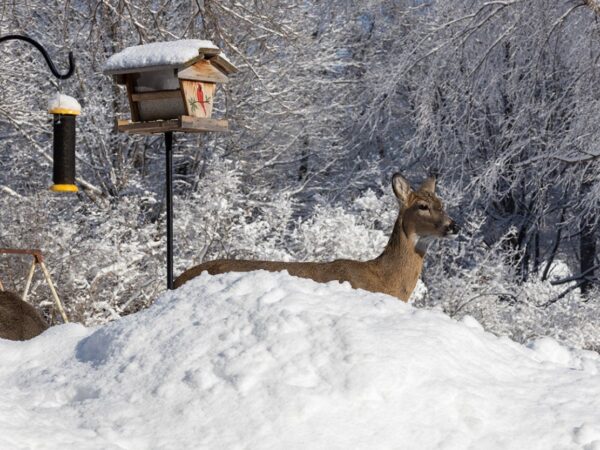
Bill aims to allow backyard wildlife feeding, but critics fear deer disease
State Rep. Ken Borton wants to allow recreational wildlife and bird feeding to be protected. He said the intent is to allow feeding of squirrels and other small animals. But state wildlife officials say that would encourage deer and elk to congregate, spreading disease.

FRESH: New Wisconsin Law Aims to Protect Watersheds From Farm Runoff
Fresh is a biweekly newsletter from Circle of Blue that unpacks the biggest international, state, and local policy news stories facing the Great Lakes region today.

With lawsuits stalled in Michigan, Nessel seeks Line 5 shutdown in Wisconsin
The attorney general on Wednesday filed a brief in Wisconsin federal court supporting a Native American tribe’s effort to shut down the Line 5 pipeline over fears of a rupture into a river that runs through tribal land.
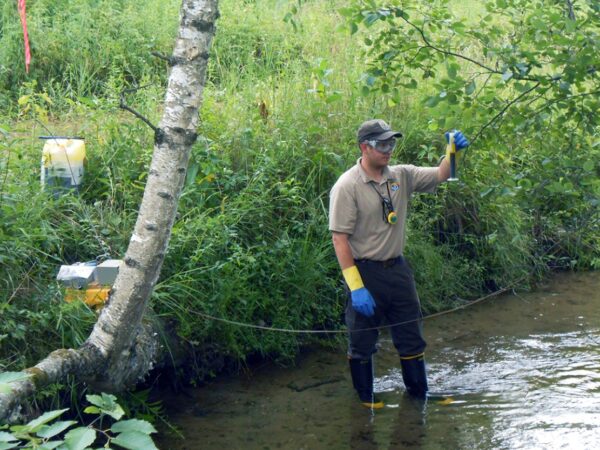
More fallout from Midland dam failures: blood-sucking parasites in rivers
The Edenville and Sanford dams once blocked invasive lampreys from entering upstream rivers. But the 2020 dam failures provided an opening, and lamprey now threaten native fish. Regulators say they have a plan.
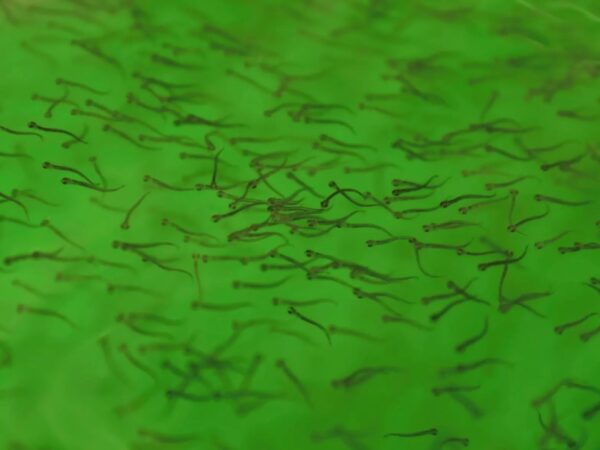
Anishinaabe tribes work to save a fish significant to their culture and an important source of protein
Native American tribes are working with researchers to determine why whitefish, an important source of protein, is declining.

EPA wants Native American tribes to implement water quality standards equivalent to the Clean Water Act’s requirements
The U.S. EPA proposes federal baseline water quality standards for lakes and streams on reservations.
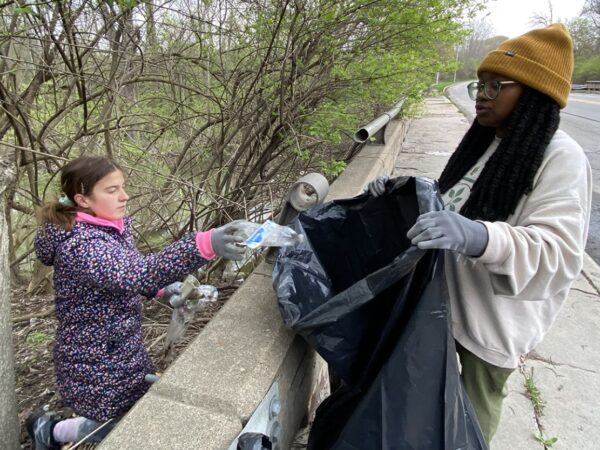
Once beset by industrial pollution, Rouge River on a slow path to recovery
Thanks to the Clean Water Act, the Rouge is no longer a dumping ground for waste. But its gains are incomplete, with contaminants still soiling the river bottom and the fish in its waters.
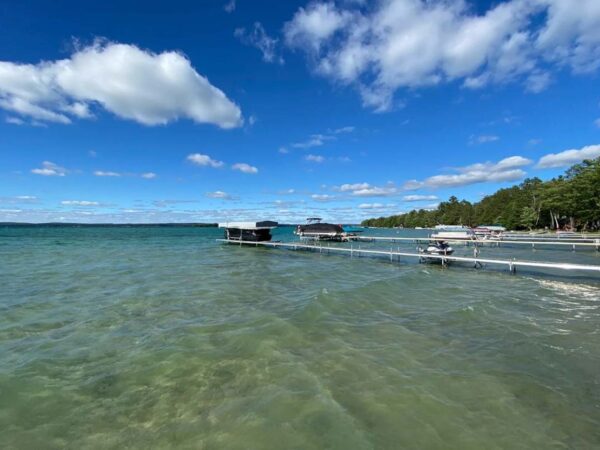
Flush with cash, Michigan lawmakers try again to pass state septic code
Democratic lawmakers want to end Michigan’s “shameful” reign as the only state without a statewide code to prevent leaky systems from fouling lakes, rivers and groundwater.
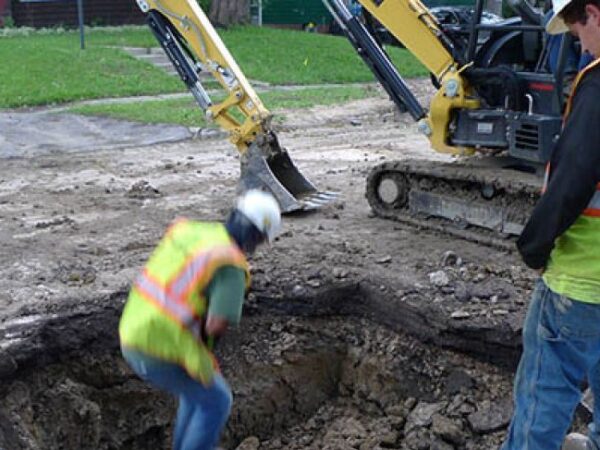
Flint misses new deadline in long-overdue lead line replacement effort
Advocates say the city has blown through a court-ordered May 1 deadline to figure out which Flint residents are still dealing with potholed yards and sidewalks, after work crews excavated lead service lines and left a mess behind.
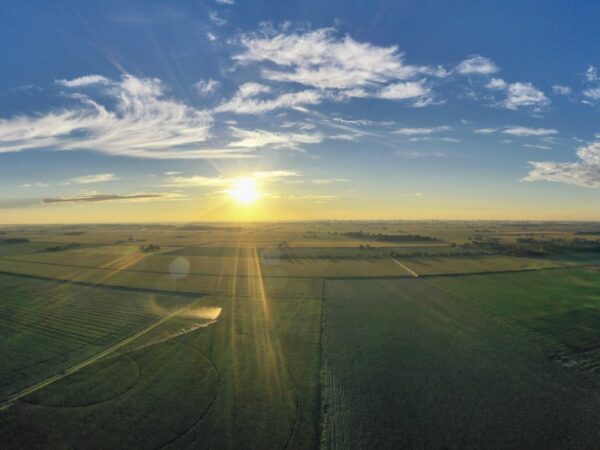
U.S. Pushes Farmers to Develop A New Crop: Energy
But more heavily fertilized corn and more manure for methane raises worries about water pollution.

Forest to MI Faucet: Using trees to keep water sources pristine
A forest expert at the Michigan Department of Natural Resources is putting together a program to use trees to help keep sources of drinking water cleaner.
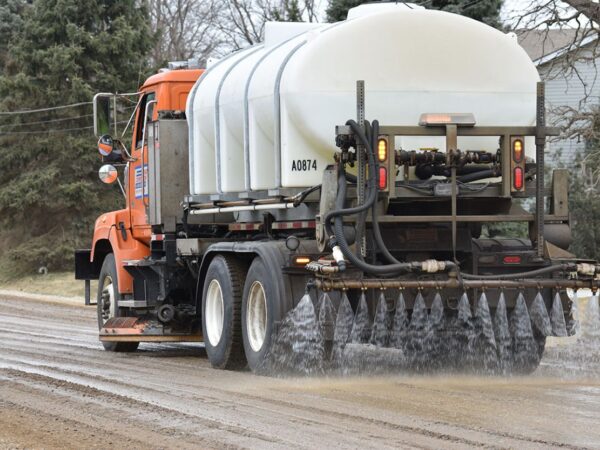
Michigan brine brouhaha: Proposed limits for unpaved roads prompt dustup
The salty solution is killing the state’s precious waters, but efforts to cut back on spraying have met fierce opposition.
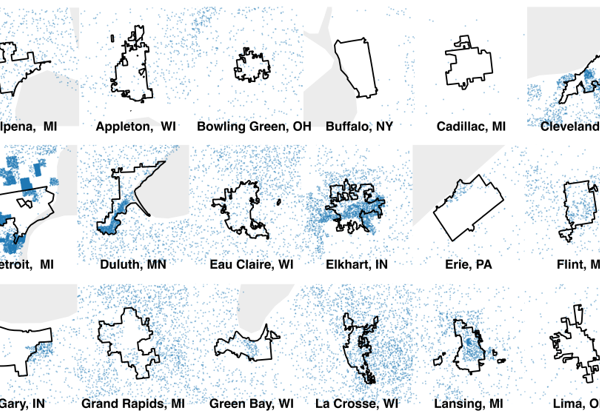
Mapping the Great Lakes: Flood risk
The highest predicted climate risk for the Great Lakes region is from heavy rainfall and subsequent flooding, which many cities have seen in recent years.
Lesson Plan: How Is Our Climate Changing?
Lessons and activities based on the monthly Great Lakes Now program.
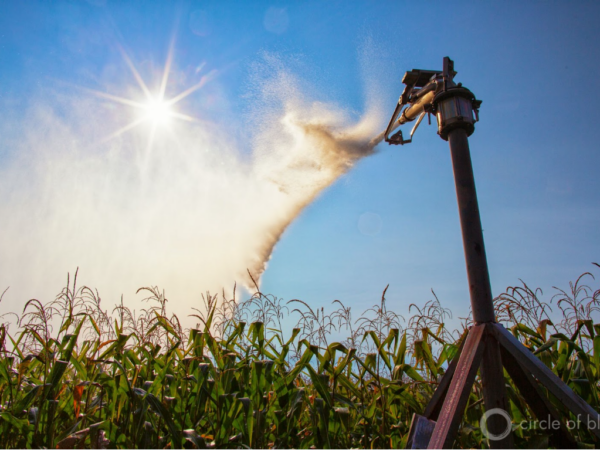
U.S. Counts on “Climate-Smart” Farms to Slow Global Warming
But skeptics assert change in practices could increase risk to water and health.
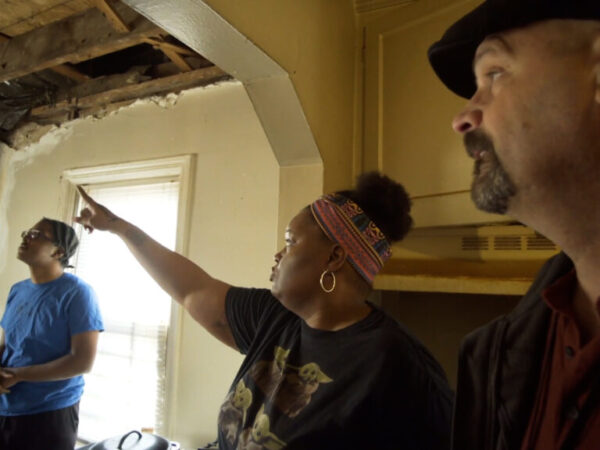
Climate change could spell catastrophe for Detroit’s older homes
Climate change continues to have an impact on residents in Southeast Michigan. As heavy rains have become more frequent, so has the flooding.
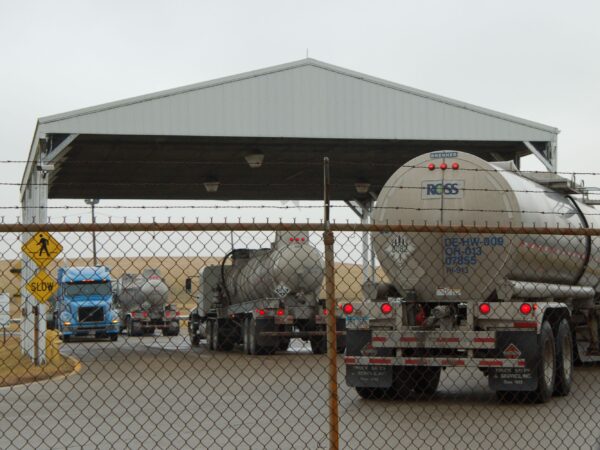
A deep dive into disposing waste from East Palestine’s derailment
Public alarm over Vickery Environmental deep well injection site is decades late.

Former U.N. adviser warns on water futures trading, elevates water crisis to level of climate
Canada’s Maude Barlow says Michigan, Canada Line 5 dispute is on the “back burner” between Trudeau and Biden.
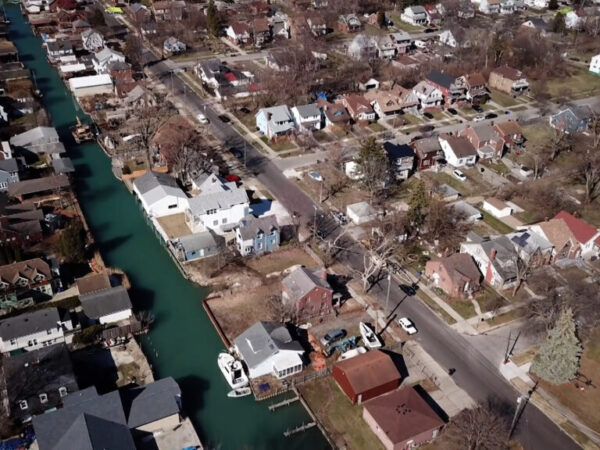
Weathering the floods: Detroit neighborhood faces uncertain future due to climate change
One Detroit visits the hard-hit Jefferson Chalmers neighborhood to learn about how climate change and flooding are impacting the area.
WATCH: Searching for stoneflies
Every winter the environmental organization Friends of the Rouge hosts their annual stonefly survey. The stonefly is a pollution-sensitive insect that calls the Rouge River home. Its absence or presence in the river helps researchers understand current water quality. Join a group of passionate citizen scientists as they search for stoneflies at a headwater stream in Ypsilanti, Michigan.
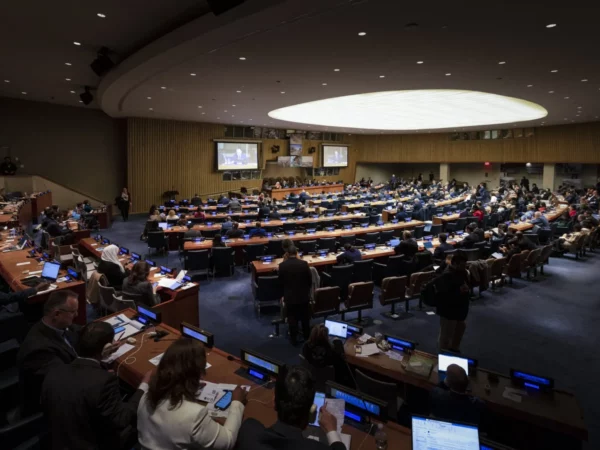
Great Lakes Take Global Stage
The 2023 UN Water Conference highlights risks and opportunities for the Great Lakes region.

Frogs, salamanders, and fairy shrimp are appearing at a vernal pool near you
Vernal pools in forests are critical to a number of species, including wood frogs and newts. Not all vernal pools are protected from destruction.
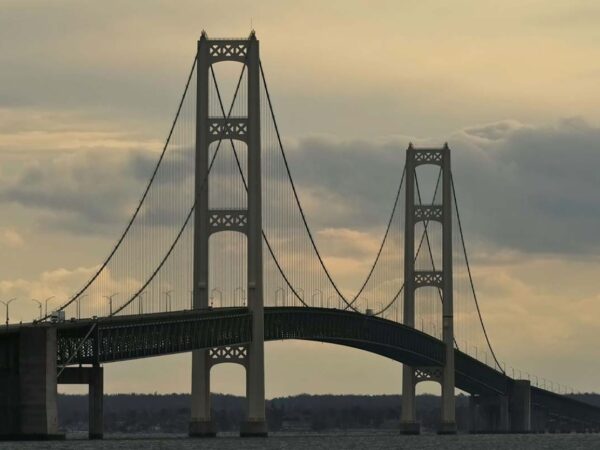
Enbridge Line 5 tunnel project in Michigan delayed another 1.5 years
Permitting delays have tacked on another year-and-a-half to the planned Line 5 tunnel project under the Straits of Mackinac.
WATCH: Salting roads smarter with Circle of Blue
The Catch featured a story about road salt reported on by Brett Walton with Circle of Blue. Walton found that road salt can be bad for waterways.
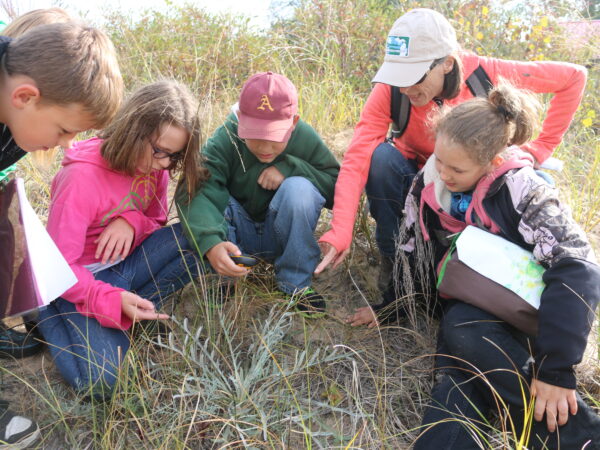
Science Says What? How 5th-graders counting plants can lead to positive change
These young researchers are participating in citizen science — the public voluntarily helping to conduct scientific research.

Multi-million dollar restoration projects proposed for the Saginaw Bay watershed; paid with settlement money from corporate polluters
Ten restoration projects have been proposed, including wetlands and other wildlife habitats.

PFAS News Roundup: All fish tested from Michigan rivers contain ‘forever chemicals’, study finds
Catch the latest updates on what’s happening with PFAS in this biweekly headline roundup.
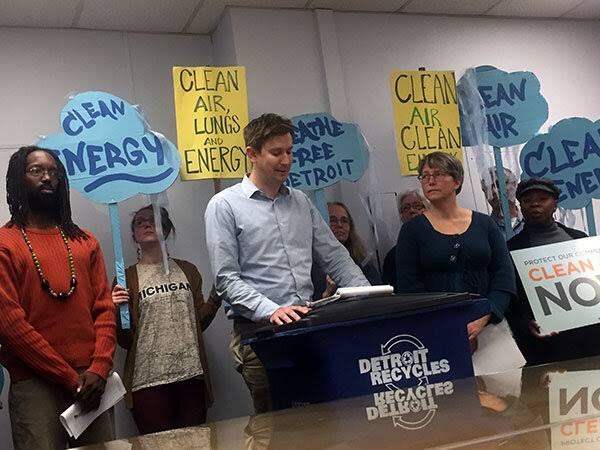
Environmental justice expert questions Michigan’s subsidies for electric vehicles
Concern over EV affordability for lower income groups and who will bear the burden of the environmental risk that comes with EV production.
Episode 2302 Lesson Plans: How cold is melting ice?
Lessons and activities based on the monthly Great Lakes Now program.

Great Lakes Moment: The event that saved Humbug Marsh
Humbug Marsh is an internationally important wetland because of its ecological impact on the Detroit River corridor and the Great Lakes Basin.
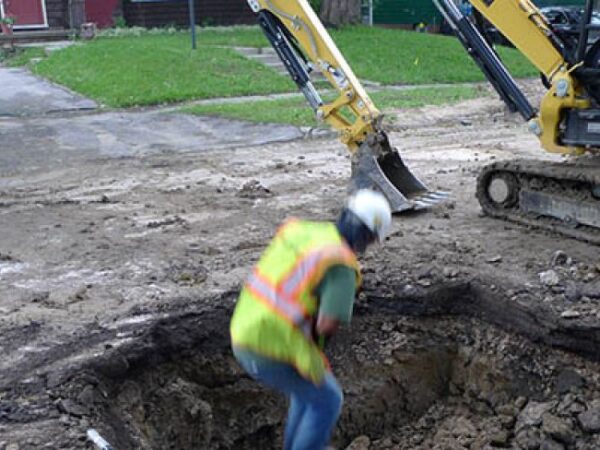
U.S. Judge: Flint has 5 months to finish long-overdue lead pipe replacement
The $97 million project was supposed to be done by 2020. Officials blame the pandemic, supply shortages and unreliable contractors for the delay.
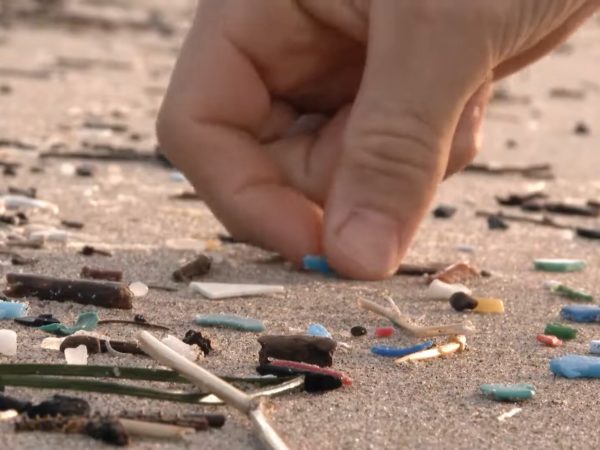
Science Says What? Microplastic pollution — how worried should we be?
Scientists have found these tiny bits of plastic all over the world — even in mosquitoes’ bellies.

Court: Nessel can try again to return Line 5 lawsuit to state court
Legal experts say Michigan has a better chance of persuading a state court to shut down the pipeline, while Enbridge is more likely to prevail in federal court.

Hope springs eternal for Michigan legislator who champions drinking water equity
Senator Stephanie Chang began her campaign to end water shutoffs in 2015. She’s hopeful for legislative action in 2023.
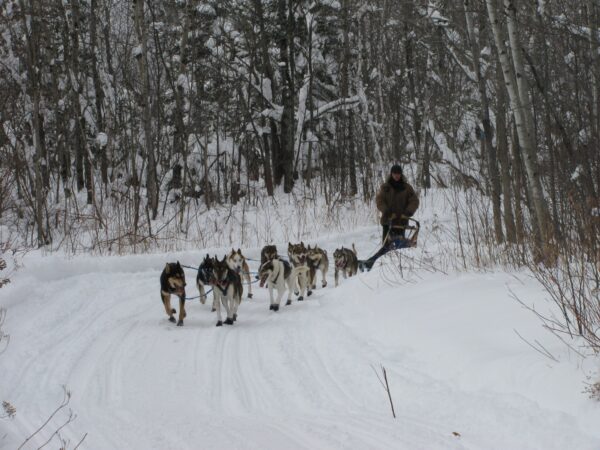
Nibi Chronicles: Standing strong with mushers on the North Shore of Lake Superior
The tradition of moving things via dog sled is deeply entrenched in the culture of the North Shore.
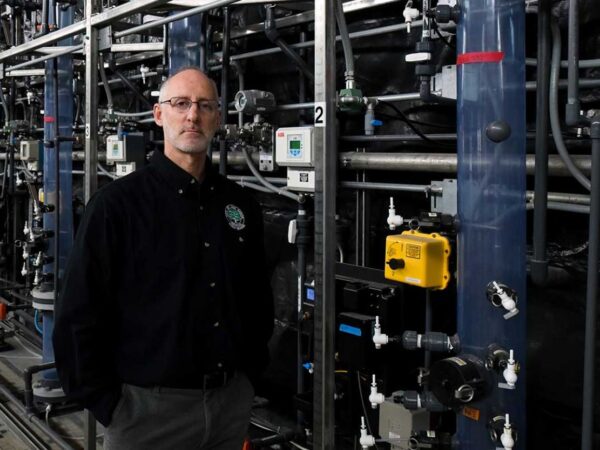
Ongoing battle to keep toxic chemicals at bay
Outdated laws leave communities struggling to ward off contaminants before they foul drinking supplies.
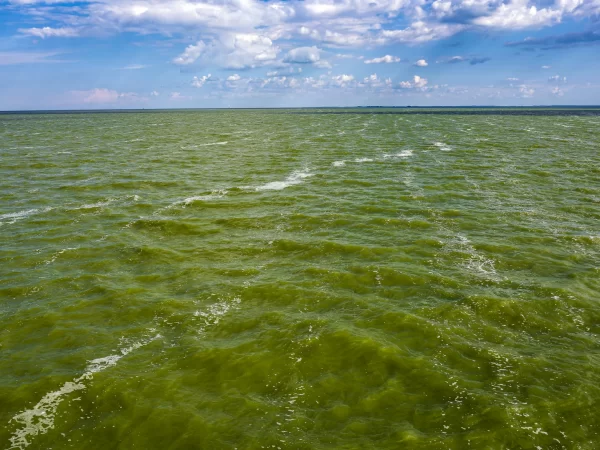
Report: MI and OH must spend hundreds of millions more annually to curb toxic blooms in Lake Erie
A new report suggests Michigan and Ohio will fail to reduce nutrient runoff by 40% as agreed upon.
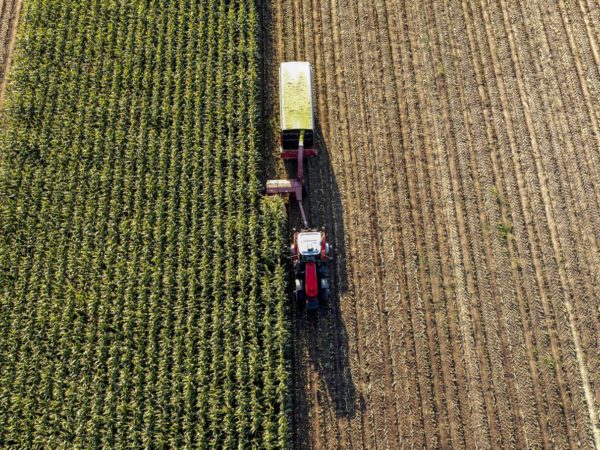
New U.S. Climate Law Could Make Midwest Water Contamination Worse
Billions in clean energy incentives rely on raw materials from polluting corn and livestock.
Episode 2301 Lesson Plans: Shrewd Sanitation
Lessons and activities based on the monthly Great Lakes Now program.
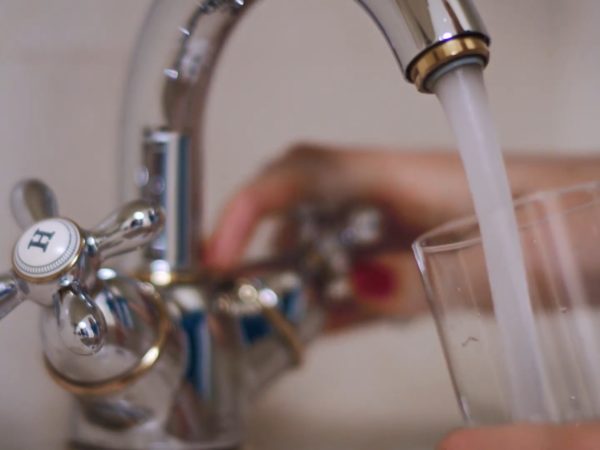
Right to water: Could 2023 be the year Michigan ends shutoffs?
Some lawmakers see a bill to declare a human right to water as a first step toward ending the shutoffs that plague low-income Michiganders.
WATCH: How smart is your sewer
The city of South Bend, Indiana, once had a big problem. Too much sewage was being pumped into the St. Joseph River, which eventually flowed into Lake Michigan. The US government ordered the city to do something about it. But, the price tag was astronomical. Desperate for a solution, city officials found a smart one right under their noses.
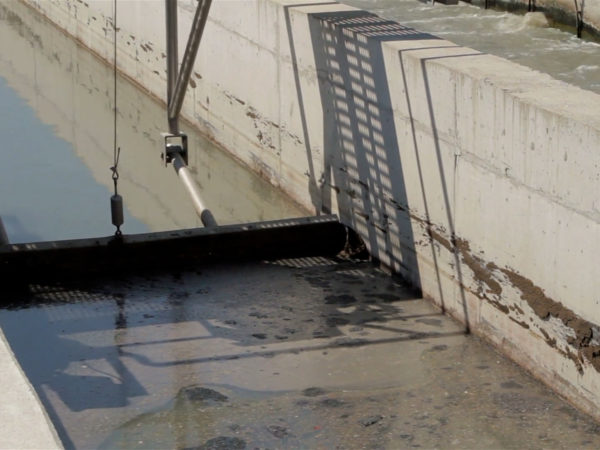
Smart sewers relieve stress on systems and wastewater officials, saving energy and funds
“Smart sewer” technology is increasingly common in the region, helping cities avoid overflows that release untreated sewers into lakes and rivers.

Lakes Michigan and Huron join list of lakes with PFAS-tainted smelt
State regulators this week warned anglers to limit their meals of rainbow smelt taken from the two lakes, along with three inland lakes.
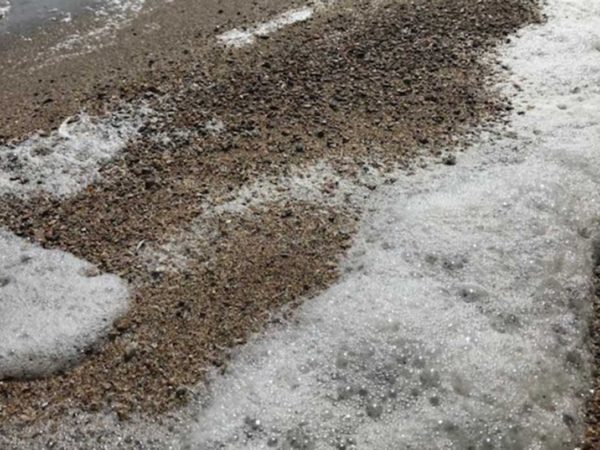
Michigan plastics company forced to probe PFAS contamination, cover costs
The settlement comes as Attorney General Dana Nessel pursues lawsuits against a host of companies.
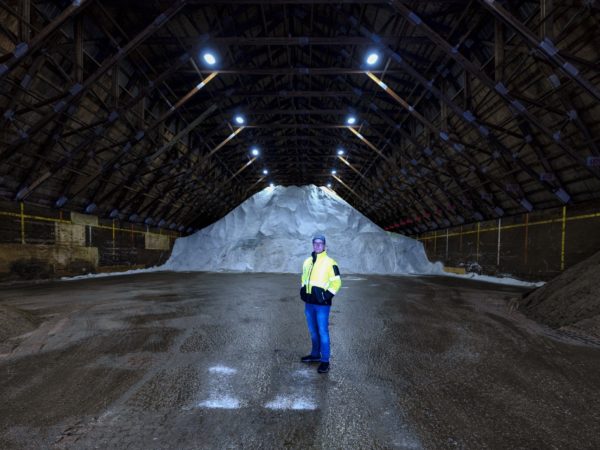
Road Salt, A Stealthy Pollutant, Is Damaging Michigan Waters
Rivers and lakes are becoming saltier while law and practice limit effective responses.

Book chronicles human, water connection from nomadic to modern times
The journey of modern man began 10,000 years ago and “the distribution of water defined its starting point.”
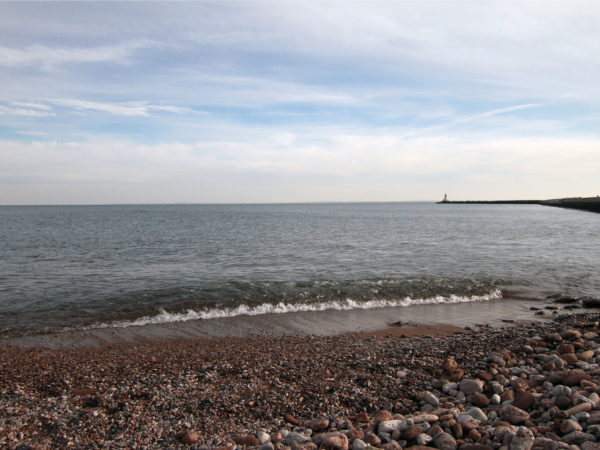
Science Says What? Climate change, deluges and snow days
In this new feature, see what scientists are learning about the impacts of climate change on the region – and what can be done to mitigate them.

Nibi Chronicles: “The trees of our homeland”
The Ojibwe word for the paper birch is wiigwaasi-mitig — or Nimishoomis wiigwaas — Grandfather Birch.
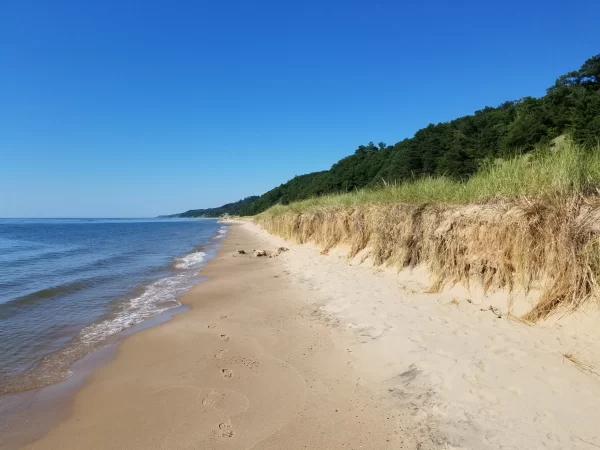
Multi-state group prepares Great Lakes basin for effects of climate change
The Great Lakes Commission has a plan to guide the states and provinces surrounding the Great Lakes toward protecting their communities from the climate-change damage.
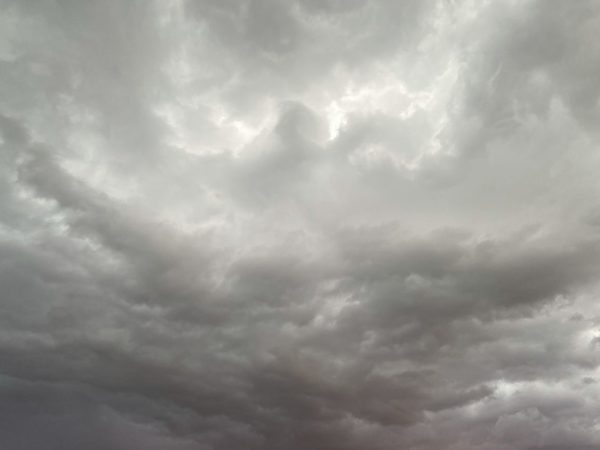
Michigan winters are super cloudy and getting worse. Here’s how to deal.
Blame the Great Lakes and climate change for Michigan’s dreary winters.

PFAS News Roundup: ‘Forever chemicals’ in Lake Michigan
Catch the latest updates on what’s happening with PFAS in this biweekly headline roundup.
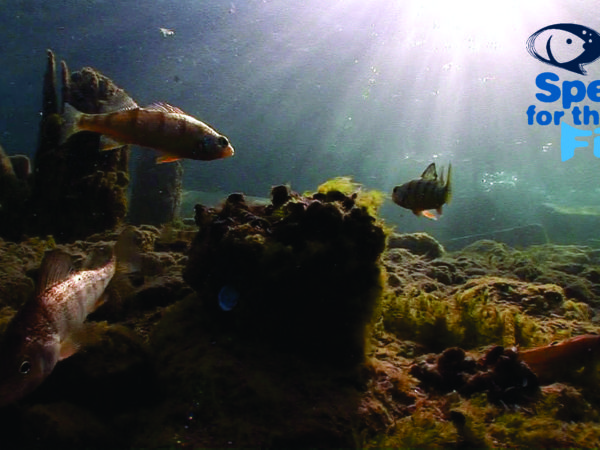
I Speak for the Fish: And the survey says…
Doom and gloom coverage of the Great Lakes’ underwater realm has unfairly skewed the public’s perception.

Join Bridge, Circle of Blue to discuss Michigan lawmakers’ water priorities
On Jan. 25, Bridge Michigan environment reporter Kelly House will moderate a Zoom discussion about the priorities for water in the 2023 Michigan Legislature.
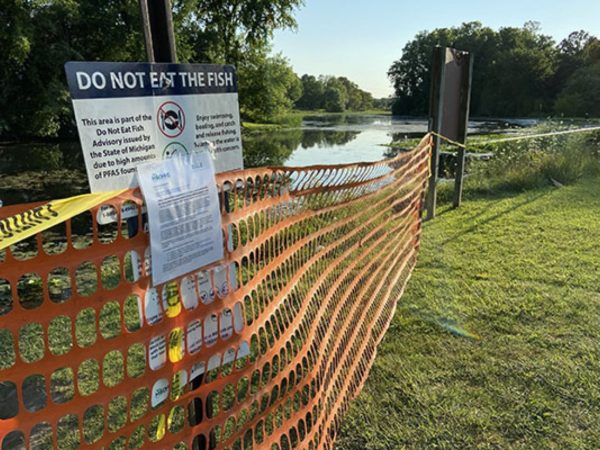
Michigan Democrats aiming to erase business friendly environmental laws
From polluter pay laws to plastic bag bans, Democrats and environmental advocates hope to reverse Republican-passed laws.
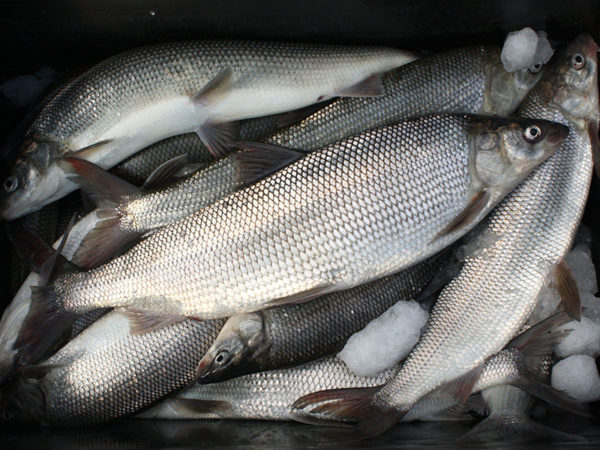
Michigan tribes, state reach tentative deal on Great Lakes fishing access
Under the deal, tribal fishers could use gillnets in more places to cope with declining whitefish populations.
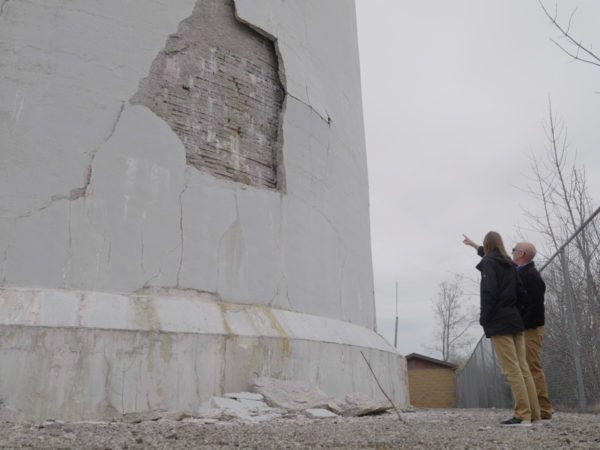
Divided Congress: Smooth sailing or choppy waters for Great Lakes programs?
Great Lakes funding has been bipartisan, but the EPA will face more oversight and the region may have less influence in D.C.

Nibi Chronicles: Beach at Nishkwakwansing returned to tribal trust
In indigenous tradition, “land isn’t just land,” and a modern controversy highlights that in northern Minnesota.
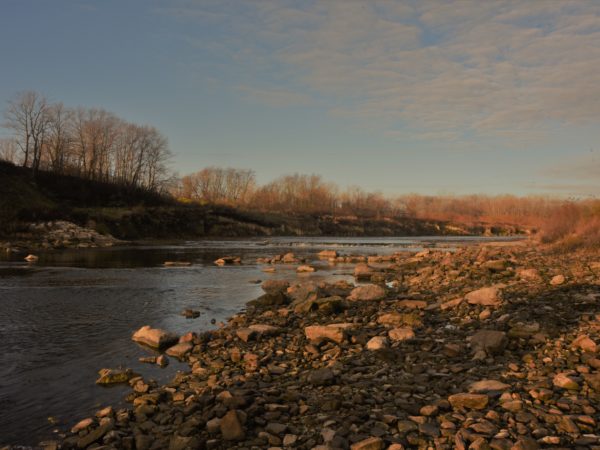
Ballville Dam Removal: History, trends and impacts
An Ohio dam was removed in 2018. What’s been the effect on the environment, the fishing and the community?
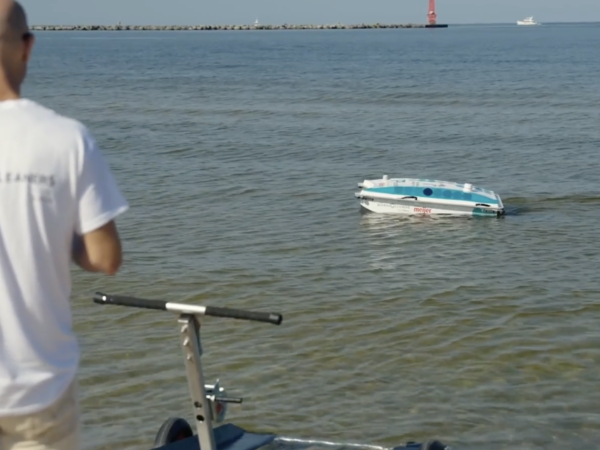
The Catch: Robots Tackle Shoreline Trash
The bots will collect plastic pollution from both the shoreline and the water as part of a larger binational effort called the Great Lakes Plastic Cleanup initiative.
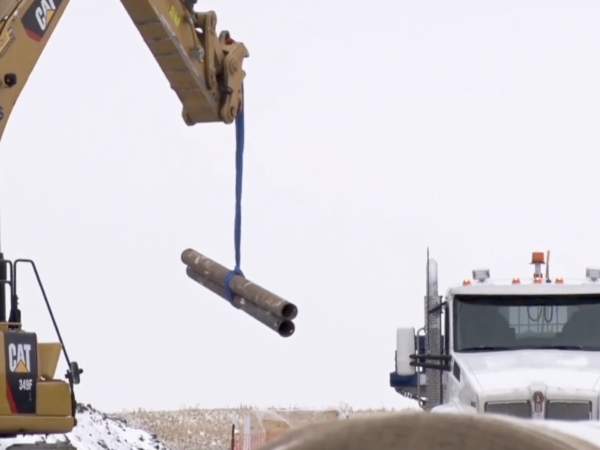
The Catch: The Latest on Enbridge Line 3
Enbridge is facing government action and criminal charges stemming from violations during the construction of the Line 3 pipeline in Northern Minnesota.

Buffalo legislator calls for bill of rights protection for the Great Lakes
Unique legislation would provide “personhood” rights but legal barriers to adoption are significant. Public Trust doctrine as an alternative.
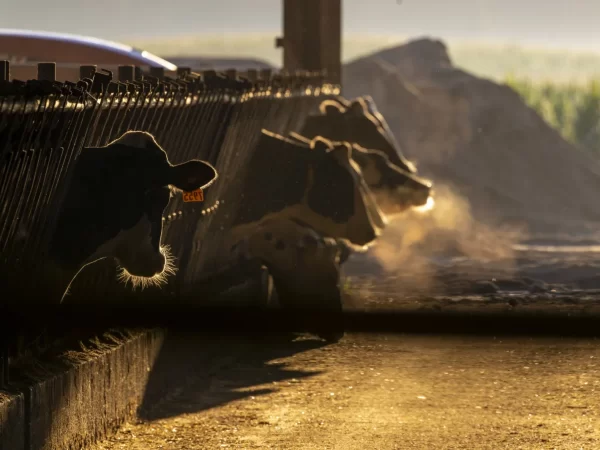
Opposition to CAFOs Mounts Across the Nation
Toxic manure discharges from large livestock operations is a major source of water pollution.
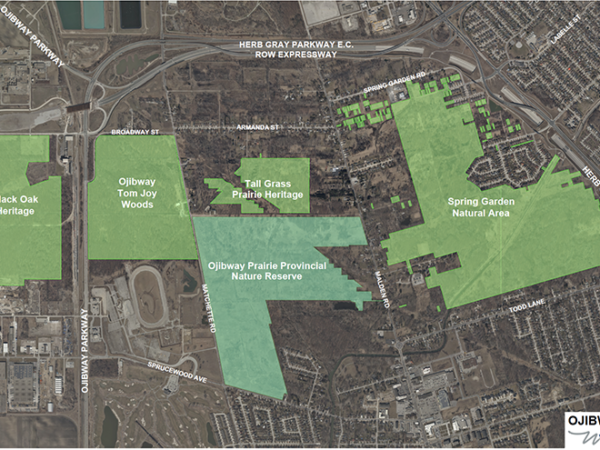
Great Lakes Moment: Detroit’s benefits of a national urban park in Windsor
Windsor’s proposed Ojibway National Urban Park will not only reap such benefits in its metropolitan area but in the Detroit metropolitan area.

Drinking Water News Roundup: Report urges Michigan water-affordability strategy, $191 million to target Minnesota water and infrastructure projects
Catch the latest updates on what’s happening with drinking water in Great Lakes Now’s biweekly headline roundup.

Michigan hunters say 252,000 deer killed in firearms season with new rules
This year, hunters were required to report their deer kills, a move wildlife managers say will help the state better manage Michigan’s growing herds.
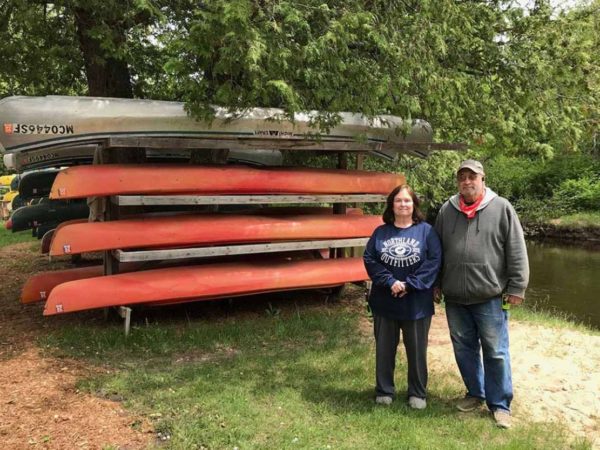
Michigan’s outdoor recreation boom is becoming a business boom
Michigan’s COVID-19 outdoor recreation boom has produced a subsequent business boom, according to a new federal report on the state’s outdoor scene.
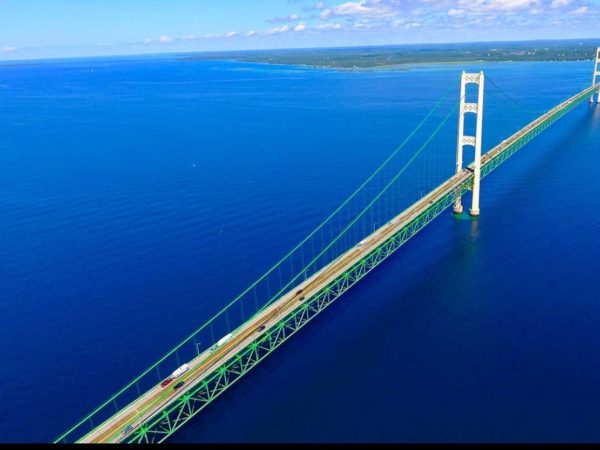
Why Line 5 will likely remain open despite Democratic control of Lansing
Don’t expect big new efforts to shut down Line 5 when Democrats take control. Those on both sides of the issue say the pipeline’s fate is now in the hands of a federal judge.

Democrats in control: Advocates want action on justice, climate and “stronger leadership” from Gov. Whitmer
“Deal with the problem of environmental racism head on and finally put it to bed.”
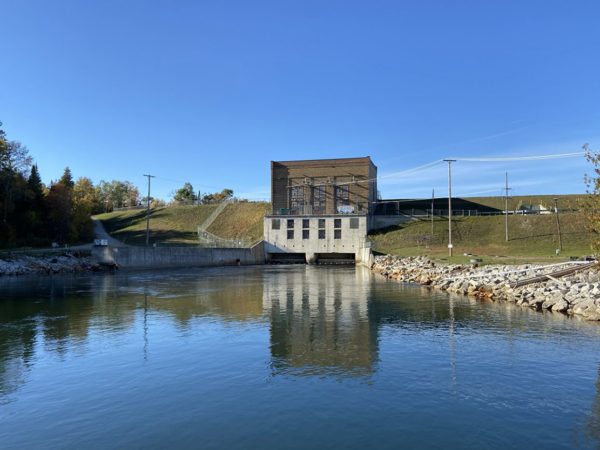
Uncertainty for Michigan rivers, residents as Consumers reconsiders its 13 dams
The dams are expensive to maintain and are harmful to rivers and fish. But their reservoirs bring visitors that help support small communities.


